PARKER



Canadian Parking Association | 41+ years of innovation
• Thought Leaders & Researchers
• Parking Operators & Managers
• Mobility Service Providers
• Urban Planners & Designers
• Transportation Engineers
• Equipment & Technology Innovators
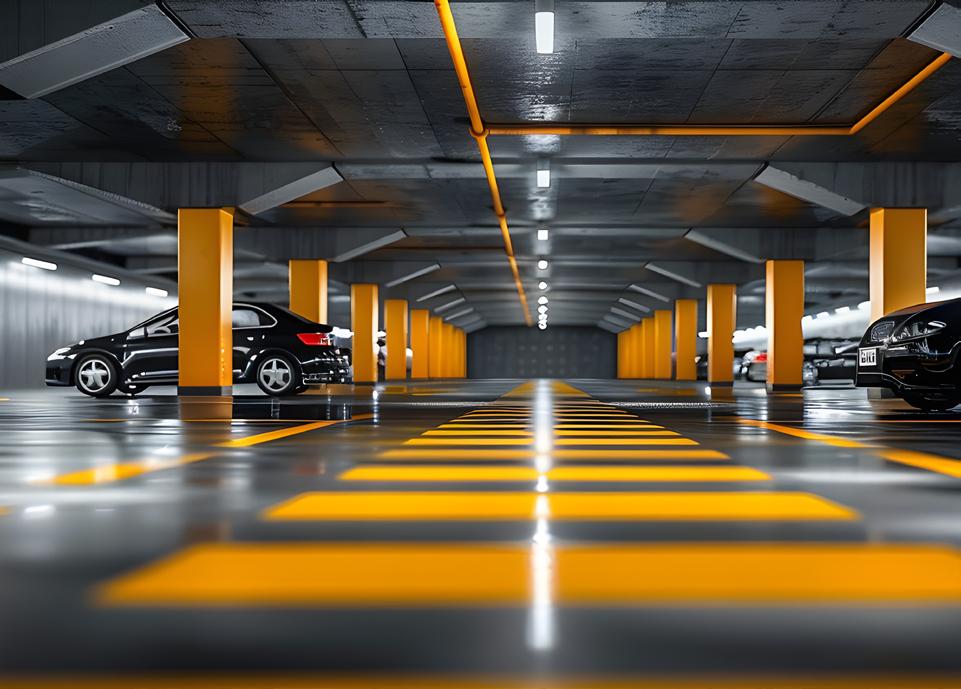
JOIN US AT THE
• Sustainable Transportation Advocates
• EV/AV Developers
• Community Advocates
• Government Officials & Policymakers
• Real Estate Developers
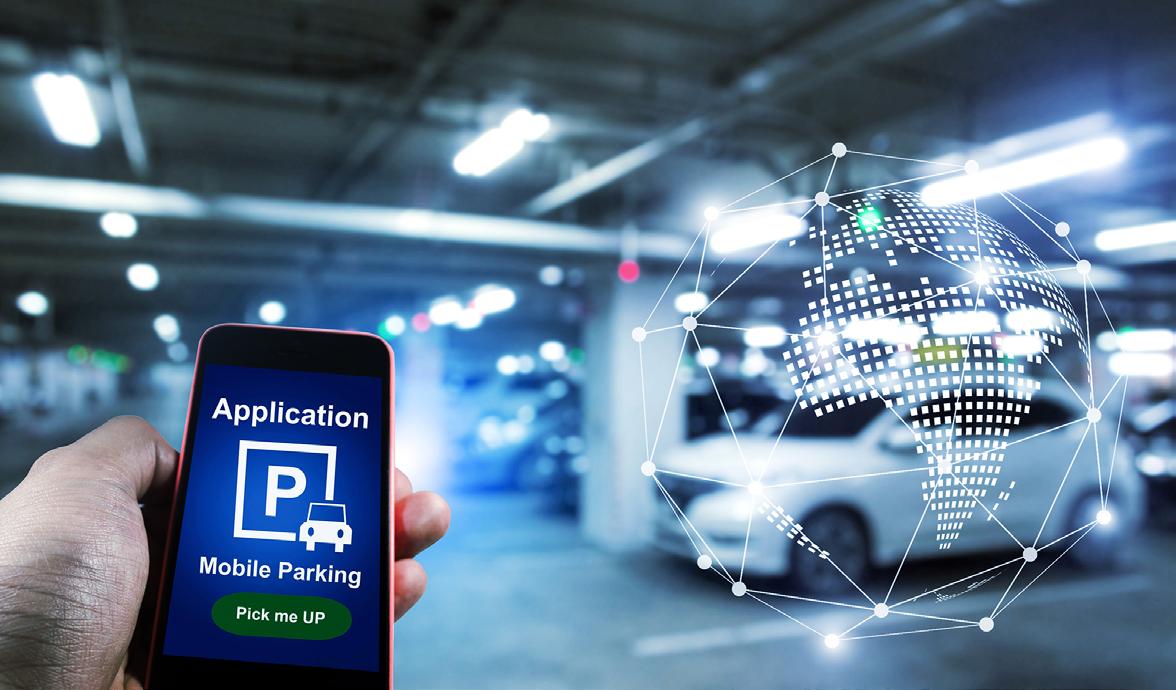

&

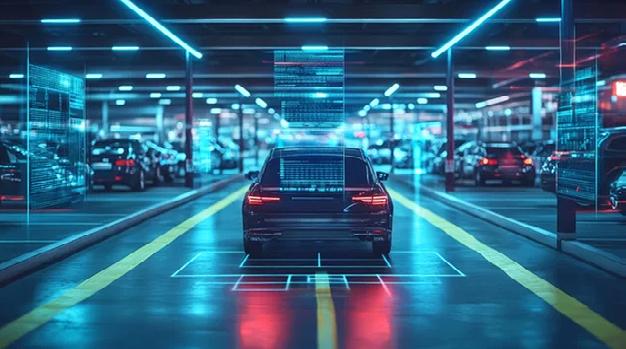


Bullers, Shirley Rodriguez, and Paul Yakutchik
The Canadian Parking Association’s Management Training and Certification
PRESIDENT
Ralph Bond BA Consulting Group Ltd. bond@bagroup.com
VICE PRESIDENT
Anna Marie O’Connell patandamo@gmail.com
TREASURER Frank Cavaliere RJC Engineers fcavaliere@rjc.ca
SECRETARY
Adamo Donatucci Precise Parklink adonatucci@precisebi.com
PAST PRESIDENT
Alex MacIsaac University of Toronto a.macisaac@utoronto.ca
DIRECTORS
David Agosti Simon Fraser University daagosti@sfu.ca
Chris Blaschuk The City of Calgary chris.blaschuk@calgary.ca
Sam Cusick AIMS (EDC) Corp. sam@aimsparking.com
Nicolas Filion Agence de mobilité durable nfilion@agencemobilitedurable.ca
Rozanne Haddad Interior Health Authority Rozanne.Haddad@interiorhealth.ca
Sharon Lewinson ACT Canada info@actcanada.com
James Mackay Mackay Meters james.mackay@mackaymeters.com
Ken Skinner Crombie REIT ken.skinner@crombie.ca
Randy Topolniski Winnipeg Parking Authority randytopolniski@winnipeg.ca
EXECUTIVE DIRECTOR
Carole Whitehorne 613 727 0700 x 10 carole@canadianparking.ca
BRAND & COMMUNICATIONS
Brenda Hanna 613 727 0700 x 15 brenda@canadianparking.ca
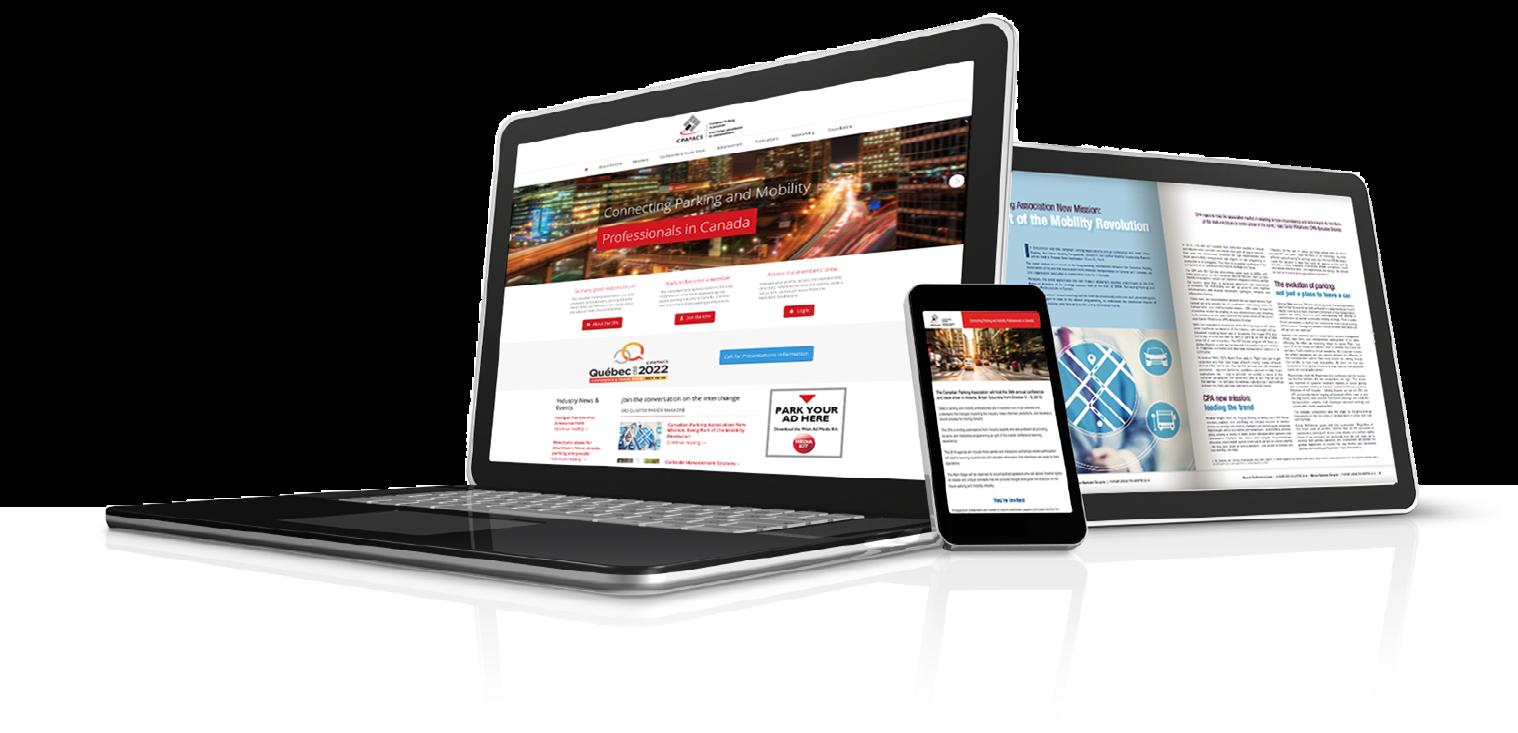
The Canadian Parking Association is now offering three marketing options to effectively connect with potential clients. Maximize your outreach and direct your advertising towards the Canadian Parking and Mobility markets by taking advantage of these new opportunities offered by the CPA.
Combine advertising options and save. Ad space rates for Parker magazine will be discounted by 10% for each issue that is accompanied by an online web ad or eNewsletter ad.
Combined circulation for Parker and eNewsletter options will place your ad in front of 4,500 contacts up to 30 times in a calendar year. Online ads and electronic Parker are just a click away, and will link CPA contacts and visitors directly to your site.
Secure your preferred space today.
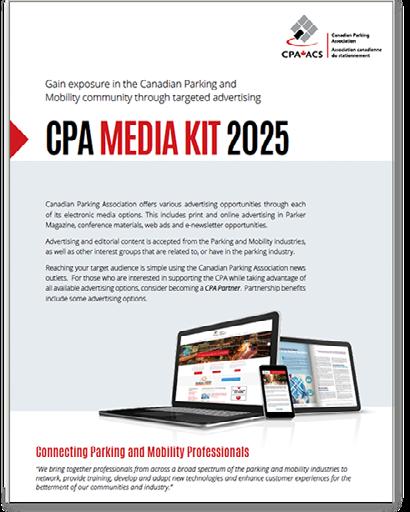
EDITOR AND ADVERTISING
carole@canadianparking.ca
613-727-0700 x 10
DESIGN AND MARKETING
brenda@canadianparking.ca
613-727-0700 x 15





Distribution: 4,200
RESERVE YOUR ADVERTISING SPACE TODAY! info@canadianparking.ca



STAY CONNECTED WITH THE CPA
www.canadianparking.ca/contact


















































CAROLE WHITEHORNE, EXECUTIVE DIRECTOR
As we approach the end of the year, it’s that time again for our annual membership renewals. I want to take a moment to underscore the importance of your continued support for our association. It is through your dedication and commitment that we can continue to promote the parking industry, advance best practices, and ensure that our collective voice is heard loud and clear.
Membership is more than just a subscription; it is an investment in the future of our industry. By renewing your membership, you not only gain access to invaluable resources, education, and networking opportunities, but you also contribute to a vibrant community dedicated to innovation and excellence in parking and mobility solutions. If you aren’t a member, now it the time to join! Bring your experiences and share them with other members, from whom you will certainly take away new insights into the industry.
We are also excited to share that we are updating our annual conference and trade show format based on feedback collected from our recent attendee survey. Your insights are invaluable, and we’re committed to structuring the event to better deliver value to all stakeholders. We will enhance our programming, featuring more relevant topics and engaging speakers, adjust the trade show to ensure a sustainable marketplace is offered, ensuring that everyone leaves with actionable takeaways to implement in their organizations.
In the spirit of growth and collaboration, we are looking to expand our association's reach by actively engaging new members from the mobility and transportation sectors. As the landscape of urban transport continues to evolve, integrating these industries into our association will allow us to share insights, foster partnerships, and address the challenges and opportunities that lie ahead. We believe that inclusivity and diversity in membership will enrich our discussions and further strengthen our position as leaders in parking and mobility.
We are committed to hosting events, webinars, and workshops that cater to a broader audience, ensuring that we remain at the forefront of industry trends and innovations. Reach out to us and suggest a speaker or topic that you would like to see on our platform. Your participation is vital to this endeavor; together, we can shape the future of transportation and parking.
Thank you for being a valued member of our community. We look forward to another year of growth, collaboration, and support for the industry, and we can’t wait to embark on this exciting journey with you.
I wish you a happy and restful holiday season and look forward to an exciting new year at the CPA. n

Carole Whitehorne, Executive Director

We believe that inclusivity and diversity in membership will enrich our discussions and further strengthen our position as leaders in parking and mobility.
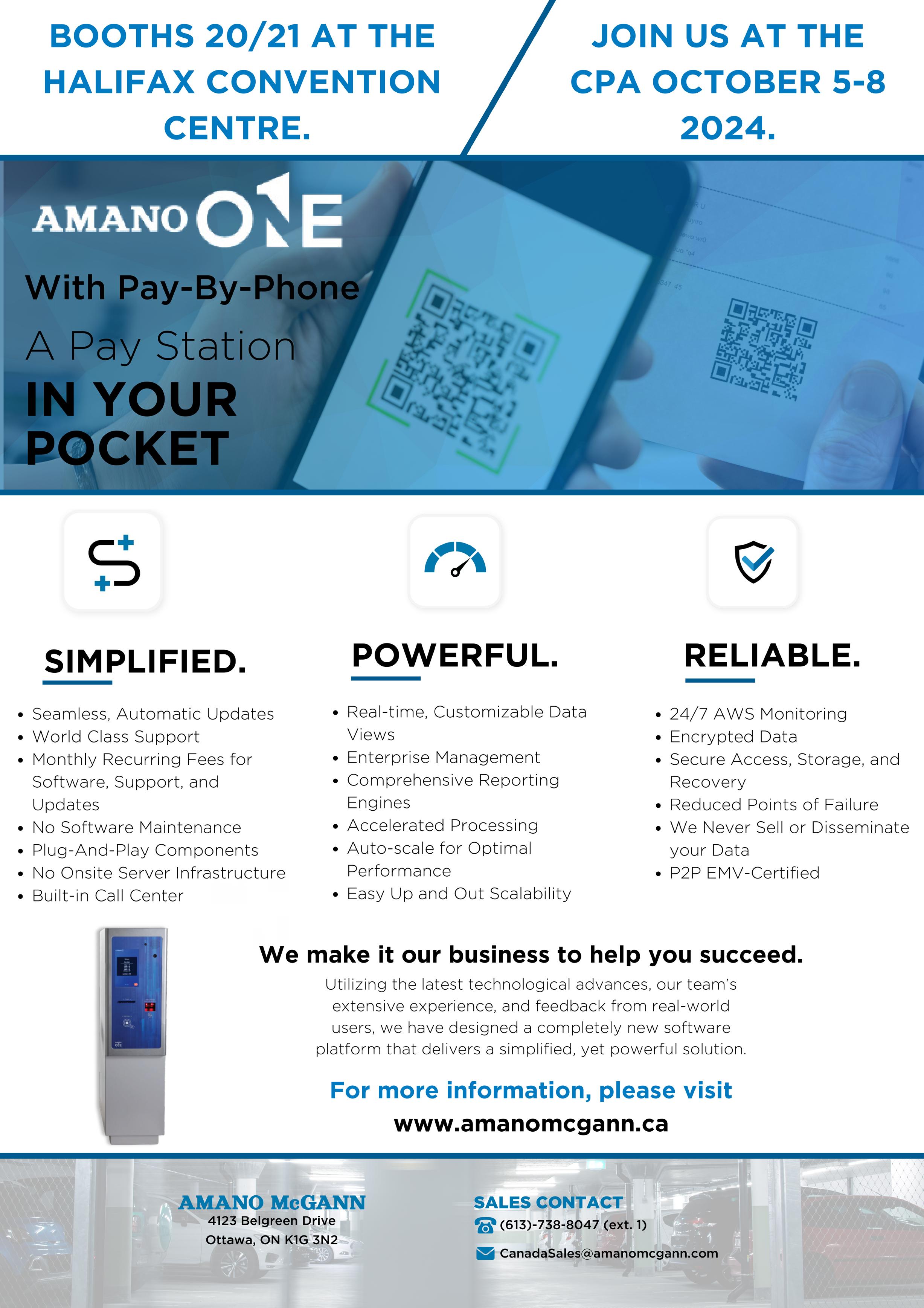

RALPH BOND, PRESIDENT
Many thanks to the delegates, suppliers and sponsors for supporting our 41st annual Conference and Trade Show in Halifax. It has been a long time since we were last there and it was good to see how well the downtown area is doing. Thank-you James Mackay, Mackay Meters and Ken Skinner, Crombie REIT, our two local directors, for guiding us to a great conference.
It was good to catch up with all the people who make the parking industry so interesting. The in-person networking opportunities that we provide at the conference are one of our most valuable assets. Parking people are some of the most enthusiastic, friendly and fun professionals around, as they once again demonstrated at the conference. I am looking forward to seeing you again next year.
Thank you to the people who took the time to respond to our post-conference survey. We use this survey to gauge how well the conference is doing and solicit comments on where improvements might be made. We welcome comments or suggestions from members throughout the year, so please send them along to our Executive Director Carole Whitehorne or any of our board members whose contact info can be found at the beginning of the magazine.
We added two new people to our board of directors at our AGM – David Agosti from Simon Fraser University to represent British Columbia and
Chris Blaschuk from Calgary Parking to represent municipal operators. Thank you, David and Chris, for volunteering your time and expertise. We look forward to hearing your perspective on the industry and guidance on improving the CPA. I also want to thank our volunteer board of directors for their time and advice in helping to guide the CPA. Your board of directors will be focusing over the next year on improvements and rebuilding our reserves so we can continue to serve members in our uniquely Canadian way.
I encourage people to submit articles for our Parker Magazine that is published every quarter, where you can showcase your latest parking innovations or challenges and help inform your fellow parking professionals between our annual conferences.
Finally, please note that our conference next year will be in Vancouver – from Sunday October 5 to Wednesday October 8, 2025. I am looking forward to seeing you there next year.
Wishing everyone a joyful, restful, and reflective holiday season. n

CPA President bond@bagroup.com

Parking people are some of the most enthusiastic, friendly and fun professionals around, as they once again demonstrated at the conference.

Warm wishes from us to you, as we celebrate the holiday season and look towards a healthy, happy and peaceful New Year.

BY STEPHANIE NOWE-MORRIS
PARKING STRUCTURES ARE OFTEN OVERLOOKED IN URBAN PLANNING, ESPECIALLY IN HEALTHCARE SETTINGS WHERE DEMANDS ARE UNIQUE AND MULTIFACETED. THE RECENTLY OPENED QEII HEALTH SCIENCES CENTRE PARKADE STANDS AS A TESTAMENT TO NOVA SCOTIA’S COMMITMENT TO ACCESSIBLE AND SUSTAINABLE DESIGN, PROVIDING A NEW MODEL FOR MODERN PARKING THAT BALANCES FUNCTIONALITY WITH COMMUNITY NEEDS. THIS EDITORIAL EXPLORES HOW THE QEII PARKADE HAS TRANSFORMED INTO A VIBRANT LANDMARK, INTEGRATED PART OF HALIFAX, SERVING PATIENTS, VISITORS, STAFF, AND THE BROADER COMMUNITY.
Accessibility lies at the heart of the QEII Parkade’s design. Located directly across the street from the Halifax Infirmary, accessible by a pedway the parkade provides convenient, centralized parking for patients, visitors, and healthcare staff, with a capacity for 540 vehicles. This proximity minimizes walking distances, offering seamless access for those with limited mobility and reducing stress for anyone navigating healthcare services.
To ensure universal accessibility, the parkade includes a range of thoughtful features. Ample accessible parking spaces, intuitive wayfinding signs, and resting areas have all been incorporated to prioritize comfort. A pedway connection from the parkade to the main lobby enhances safety and ease of access, and redundant elevators, tactile indicators for the visually impaired, and Staxi services further emphasize inclusivity. The QEII Parkade sets a new benchmark in accessible design for healthcare infrastructure, highlighting the importance of creating spaces that support all individuals’ needs.
Community integration was a key priority throughout the planning and design process of the QEII Parkade. Extensive public consultations took place to engage local stakeholders and address any concerns, ensuring that the parkade would be welcomed by the Halifax community. This open dialogue involved representatives from Halifax Regional Municipality, Friends of the Commons, the Museum of Natural History, and even local beekeepers, highlighting the project’s commitment to collaboration.
Feedback from the consultations led to adjustments that minimized noise and traffic impact, protected tree cover, and respected existing active transportation route easements. By aligning with the surrounding Halifax Commons and balancing the urban landscape with a structure that complements its environment, the QEII Parkade has become a functional and aesthetically pleasing asset. This proactive engagement demonstrates that when stakeholders’ concerns are addressed, infrastructure projects can enhance the community rather than disrupt it.
The QEII Parkade introduces a fresh approach to the aesthetics of parking structures. At the heart of its design is a unique, artful façade that both beautifies the structure and reinforces cultural significance.

The QEII Parkade introduces a fresh approach to the aesthetics of parking structures. At the heart of its design is a unique, artful façade that beautifies the structure and reinforces cultural significance. Designed by local artist Andrea Tsang-Jackson, the parkade’s exterior features a mesh façade inspired by Nova Scotia’s multicultural heritage. Created in collaboration with community members, the public art decorates amd narrates the stories of the community.
The façade also includes sections designed to support greenery, creating a “living” exterior with vines that will mature and change with the seasons. This natural element adds to the parkade’s visual appeal, softening its urban impact and blending it with nearby green spaces. Over time, the vines will make the parkade appear even more integrated with its surroundings, creating a dynamic, ecoconscious addition to Halifax’s skyline. This blend of art and nature exemplifies how even functional structures can contribute to a city’s cultural and aesthetic landscape.
The QEII Parkade was designed with safety as a primary focus, especially given its 24-hour usage by visitors, patients, and staff. The structure integrates a range of safety features based on principles of Crime Prevention Through Environmental Design (CPTED), such as natural lighting, glass-enclosed stairwells, and strategically placed surveillance cameras to ensure visibility. Emergency phones and lighting systems provide accessible help points throughout, while wayfinding and occupancy sensors help manage the flow of people and vehicles.
The QEII Parkade aligns with Nova Scotia’s environmental goals, earning the Parksmart certification—a recognition of its dedication to sustainability. This eco-friendly focus is apparent in the parkade’s design and operational features, such as energyefficient lighting systems that adjust based on occupancy, locally sourced materials, and an extensive recycling program. Built using a modular, demountable precast structure, the parkade minimizes construction waste and has a lower environmental footprint.
Sustainable technology also enhances the user experience. Prime parking spots for low-emission and electric vehicles are provided, with six charging stations already installed and more to come. The parkade also offers secure bike storage and tire inflation stations to support alternative modes of transportation. These green initiatives showcase the QEII Parkade’s commitment to a sustainable future for Halifax, setting a precedent for other healthcare infrastructure projects in the region. 3. 4. 5.
With clearly marked entrances and exits, the parkade minimizes traffic bottlenecks and supports safe pedestrian movement. Additional safety measures, including emergency call stations, controlled access points, and light sensors, make the QEII Parkade a secure environment for everyone. These features create a reliable, comfortable space for users, setting a new standard for healthcare-related parking facilities.


The QEII Parkade has become more than just a parking facility; it is now a welcoming community space. Designed with the principles of placemaking in mind, the parkade includes cozy seating areas, carefully planned landscaping, and public art installations that make it a pleasant spot to pause, relax, or reflect. By prioritizing local labor and materials and supporting sustainable practices, the parkade bolsters the local economy and instills community pride.
The Parksmart certification reflects this commitment to placemaking, underscoring how thoughtful design and sustainability contribute to a sense of place. The QEII Parkade is a dynamic, community-oriented project that brings together convenience, comfort, and a sense of belonging. This thoughtful approach to infrastructure enhances the urban landscape and provides a model for future projects that aim to balance functionality with community enrichment.


With its recent opening, the QEII Parkade sets a forward-thinking standard for healthcare infrastructure. By prioritizing accessibility, environmental sustainability, and community integration, it addresses the evolving needs of Halifax’s healthcare community and its visitors. More than a parking structure, the QEII Parkade is an example of how modern infrastructure can serve immediate needs while fostering a sense of place, pride, and sustainability for future generations.
The QEII Parkade represents the potential of infrastructure to not only support essential functions but also to enrich the lives of those it serves. As cities like Halifax grow and urban demands become more complex, projects like these remind us that we can build smarter, greener, and more inclusive spaces that benefit everyone. Through the thoughtful blend of design, sustainability, and community engagement, the QEII Parkade is a vital addition to Halifax, and a vision for what the future of healthcare infrastructure can achieve. n
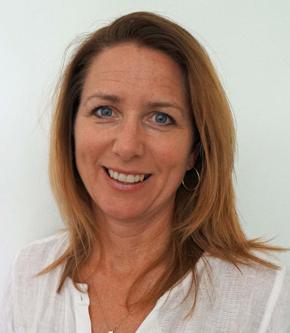
ABOUT THE AUTHOR:
Stephanie Nowe-Morris is an Architect and Project Director of Healthcare Infrastructure at Build Nova Scotia. She provides strategic leadership in the delivery of projects across the province. Her portfolio spans a wide range, from innovative parking solutions to healthcare facilities exceeding one million square feet. With over 30 years of experience in private practice, Stephanie has operated her own firm since 2002, bringing a wealth of expertise and a proven track record in designing and managing diverse projects.


Partner with the CPA to provide opportunities for growth in the coming years, bring more programming and education to CPA members and take your place as a leader in Canadian parking and mobility innovation.
Champion, Principle and Associate levels are available, and each comes with many valuable benefits for a single annual fee.
Promote your business to the parking and mobility industries in Canada by joining the CPA Partnership Program. We are keen to form strong partnerships and work with you to understand how we can create an alliance that is mutually beneficial to both parties, as well as for members of the CPA and those attending our events.
Canadians are established as leaders in North America who embrace the development and use of technology in their daily activities, and the parking industry is at the top of this field.
Partner with the CPA and gain exclusive access to this unique Canadian market and help our members to continue to be leaders of this important trend.
Demonstrate pride in supporting a Canadian association that delivers many opportunities, including the Annual Conference and Trade Show, and connect with the serious buyers you are searching for. Members of the Canadian Parking Association and stakeholders who attend this annual event are the decision makers for their organizations. Time spent networking with these delegates produces significant opportunities for vendors. Solid relationships are forged with the right people, ensuring a significant ROI to partners and exhibiting companies.
Partnership support establishes your company’s commitment to ensuring growth and profitability of this changing and diverse industry and puts your brand out front beyond the annual event through a targeted marketing program specific to the Canadian parking and mobility industry.
Establish your organization as leaders by supporting business intelligence and knowledge that will shape the future of the industry, while addressing opportunities and disruptors!
Provide mentorship in developing best practices, standards and growth for members who serve their communities through professional development opportunities offered to partners.
Enjoy significant benefits such as reduced exhibit fees, marketing opportunities, local and virtual networking events and other features included in an annual partnership.

BY TODD TUCKER
It has been the goal of urban planners and municipal leaders for years. When planners and politicians picture a smart city, they see an urban environment where technology and data collection improve the quality of life and the sustainability and efficiency of city operations.
For many communities, the most important manifestations of smart city planning revolve around mobility and parking. If visitors to an urban center can get to their ultimate downtown destination quickly, directly, and safely, the benefits are significant. Roads become less congested and, as a result, safer; the quality of life improves because of this reduced congestion; and local businesses are more likely to thrive because it’s easier for patrons and employees of local businesses to get downtown.
Smart city success is built on technology, and parking technology is the key. Specifically, parking guidance technology. Drivers need to park and making it easier to park will dramatically reduce congestion on city streets. There are several apps serving Canada that can provide basic information about where parking is available in a given city and how much it costs. But most are missing an essential element: occupancy data. These apps aren’t as useful as they could be if they don’t tell users whether there’s parking available in the parkade they’re choosing.
That’s why parking guidance technology is the driving force behind smart city parking planning. The technology already exists, and it’s up to Canada’s cities to implement those technologies.
Smart cities run on data—data about where parking is available at that moment. The technology to produce the data is available, but so far, most cities and private parking owners haven’t taken full advantage of it.
Parking guidance technology makes it easy to collect and share data. The most obvious type of data it collects is the real-time occupancy data that drives smart city applications. But it also provides additional types of valuable utilization data. For instance, it tells owners and operators how full their parkades and lots are in a given time period. It can break down utilization trends by day, week, or time of day. It can also tell them which parts of their parking facilities are most popular, and which tend to be avoided by parkers. This is all very valuable data that can inform owners’ operational and strategic planning choices. The more you know, the better the decisions you’ll make to operate facilities more effectively, efficiently, and profitably.

PARKING GUIDANCE TECHNOLOGY IS THE DRIVING FORCE BEHIND SMART CITY PARKING PLANNING. THE TECHNOLOGY ALREADY EXISTS, AND IT’S UP TO CANADA’S CITIES TO IMPLEMENT THOSE TECHNOLOGIES.
So, how can cities or private owners establish smart city networks? The first step is to get their parking lots and parkades connected with parking guidance technology. In selecting a guidance technology, there are some fundamental considerations to be addressed:
First, choose a single parking guidance system and make sure that the technology you use can communicate with all the parking lots and parkades in your network. You want to make sure that your parking guidance system is collecting utilization data from all your sites so you can make informed management decisions about your network as a whole.
Next, make sure that the parking guidance system you choose offers an app that drivers can access to see how many spaces you have in each of your lots and parkades. Preferably, the app can be downloaded to users’ smart phones or even to their dashboards. That way, when they open your app, they can see where parking is available, how many spaces are available at that moment, and how much it will cost to park with you. And if your entire system is connected, every spot that you have available across your system will be visible.
This is a tremendous customer amenity because it eliminates the stress drivers experience when they drive downtown without knowing whether they’ll be able to find convenient parking—or any parking at all. And it provides a simple way for them to compare parking facilities to find the one that best meets their needs. By providing such a convenient parking experience, the technology also helps generate user loyalty. If drivers know that they’ll be able to find affordable and convenient parking with your app, they’ll turn to your app first every time.
Make sure, too, that your parking guidance app can be white labeled. You want your branding on the app, not your parking guidance provider’s. You’re trying to build brand loyalty, and it is essential to be able to promote your brand with the app.
These rules apply to both public parking facilities and private parking owners.

Both municipal and private parking owners should also be focused on expanding the grid. For municipalities, that means collecting occupancy data from all parkades and lots, regardless of whether they are privately owned or part of the city’s parking network.
The first step in accomplishing this is to select a parking guidance technology partner with an agnostic platform with APIs to allow the municipal system to integrate with other systems. City planners should be working to establish city-wide parking grids that provide a complete look at the parking situation either throughout the city or in specific parts of it.
Cities should also encourage private owners to use platform agnostic technology and APIs so their parkades and lots can be included in the municipal parking app. In fact, some cities in the United States already require parking owners to install parking guidance technology that can be connected to the municipal parking grid. But this shouldn’t take much prodding. Every private owner should want their parking facilities included in the city app because if they aren’t on the app, they are going to lose money.
Parking data is a powerful resource, both for creating smart cities and for managing individual parkades and parking networks. And with the proliferation of parking technology and the growth of automated parking, data is everywhere. But it only has value if it’s collected and used sensibly.
When it comes to creating smart cities, parking guidance is the essential technology that makes it possible for people to find available parking quickly, conveniently, and safely. Cities should be connecting their parking facilities to city-wide grids with parking guidance systems offering easy-to-use apps and APIs to integrate with other systems. And they should be encouraging private owners to implement guidance technology with APIs so they can connect their parkades and their parking facilities to the city’s parking grid. The result will be city-wide smart city networks that improve the quality of life, support local businesses, and improve the bottom lines of public and private parking facilities.

Halifax, NS from October 6-9 for the Annual Conference and Trade Show. Halifax Convention Centre & Sutton Place Hotel
Thank you to everyone who joined us in Halifax.
Attendees, sponsors, exhibitors, speakers and volunteers came together collectively to share in this successful event.




A1 Innovation Group www.A1innovationgroup.com
Advanced Polymer Technology Corp. www.advpolytech.com
AIMS (EDC Corporation) aimsparking.com
Amano McGann Canada Inc. www.amanomcgann.ca
Canada Ticket Inc. www.canadaticket.com
Canadian Precast/Prestressed Concrete Institute (CPCI) www.cpci.ca
Concord Parking concordparking.com
Curb IQ www.curbiq.io
Electromega Ltd. www.electromega.com
eleven-x Inc. www.eleven-x.com
FAAC Parking Solutions www.faacparkingsolutions.com
FlashParking www.flashparking.com
Genetec Inc. www.genetec.com
globatech globatech.ca gtechna www.gtechna.com
HONK www.honkmobile.com
HotSpot Parking Inc. www.htsp.ca
J.J. MacKay Canada Ltd. www.mackaymeters.com
Municipal Parking Services, Inc. municipalparkingservices.com
Offstreet Technology http://www.joinoffstreet.com/
Parker Technology www.parkertechnology.com
ParkMobile, LLC parkmobile.io
PayByPhone www.paybyphone.com
Performance Products International www.ppinternational.ca
Precise ParkLink www.preciseparklink.com
RideShark Corporation www.rideshark.com
RJC Engineers www.rjc.ca
Scheidt & Bachmann Canada Inc. www.scheidt-bachmann.com
SenSen.ai sensen.ai
Southland Printing Company, Inc. www.southlandprinting.com
SP Plus Corporation Canada www.spplus.com
SWTCH Energy swtchenergy.com
T2 Systems, a Verra Mobility Company www.t2systems.com
Tannery Creek Systems Inc. www.tannerycreeksystems.com
VenTek International www.ventek-intl.com
ZipBy USA LLC https://zipby.app/

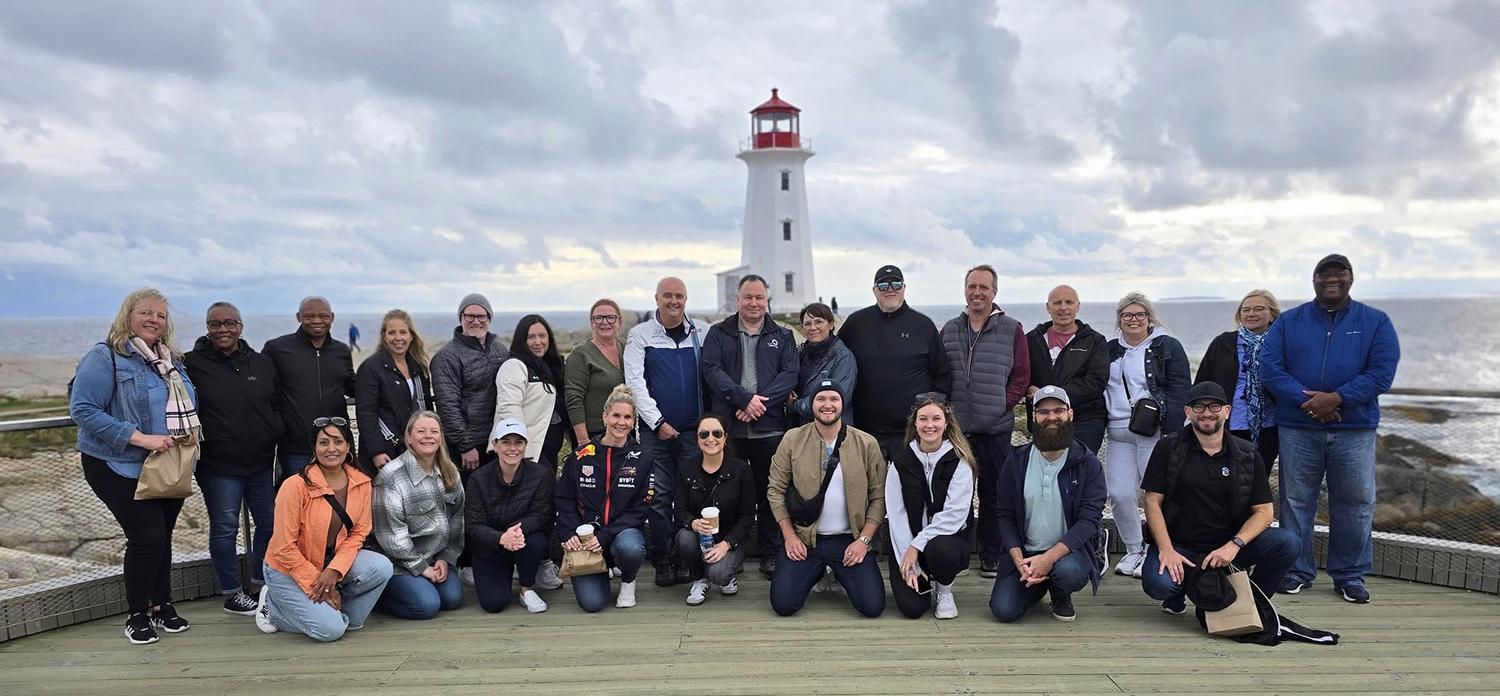

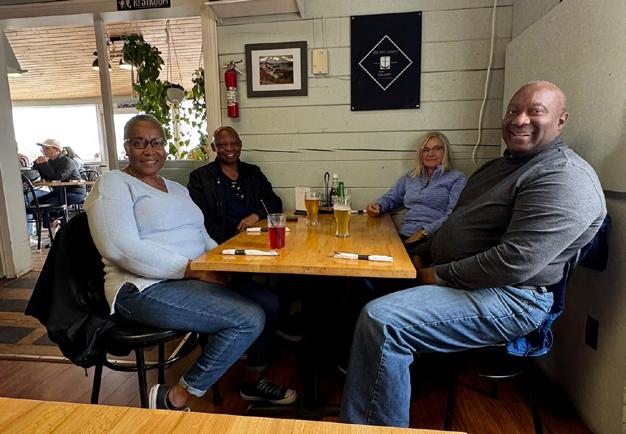
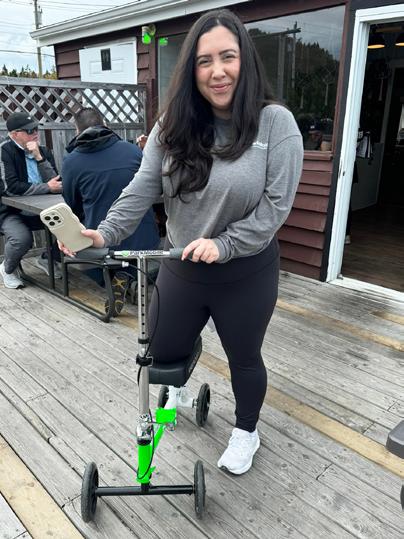

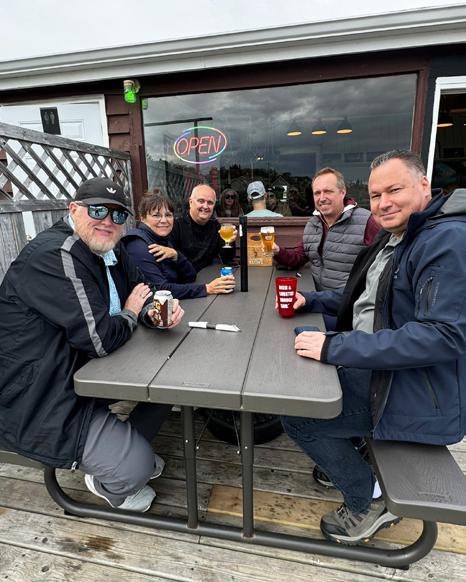
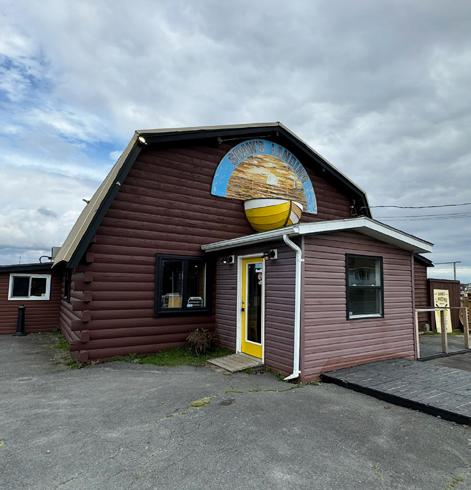


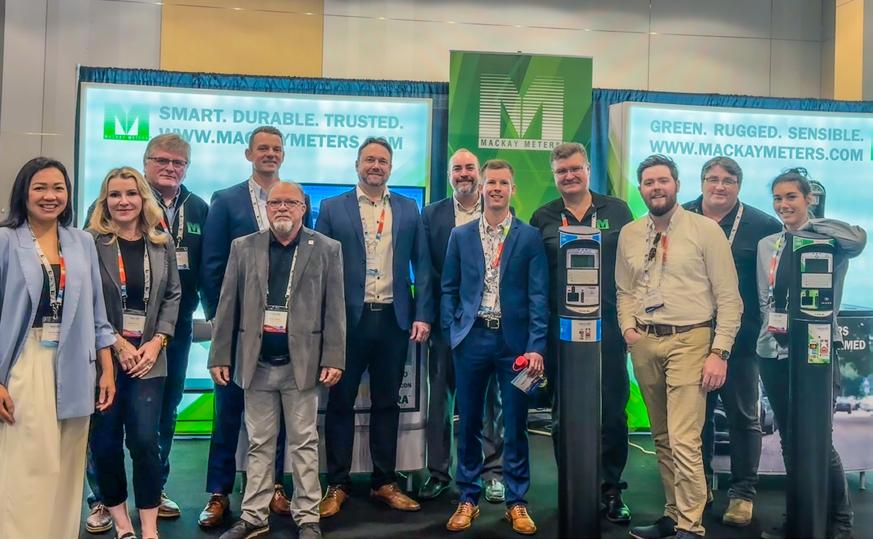
SPONSOR

SPONSOR
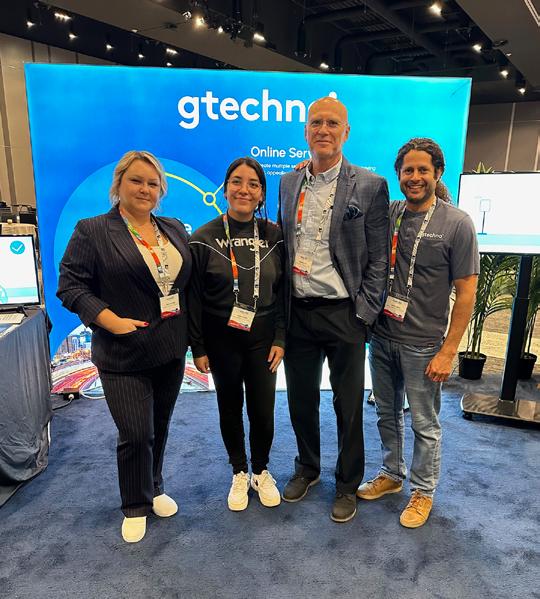
SPONSOR

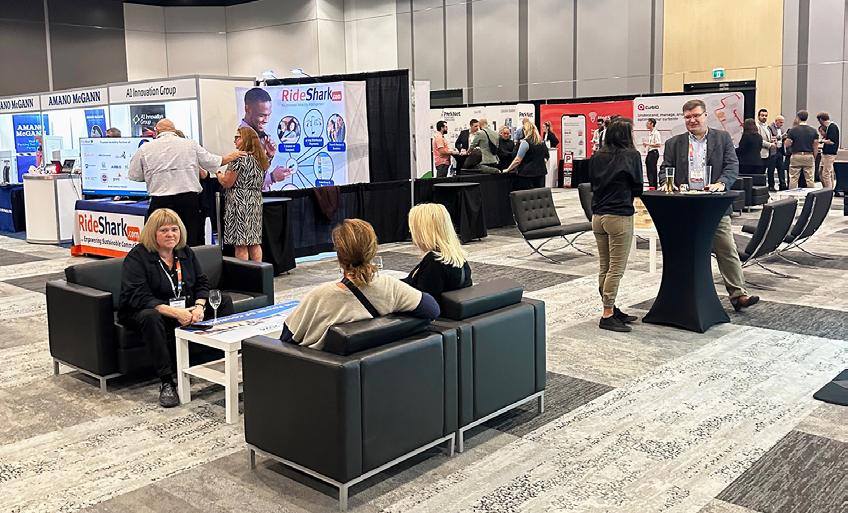

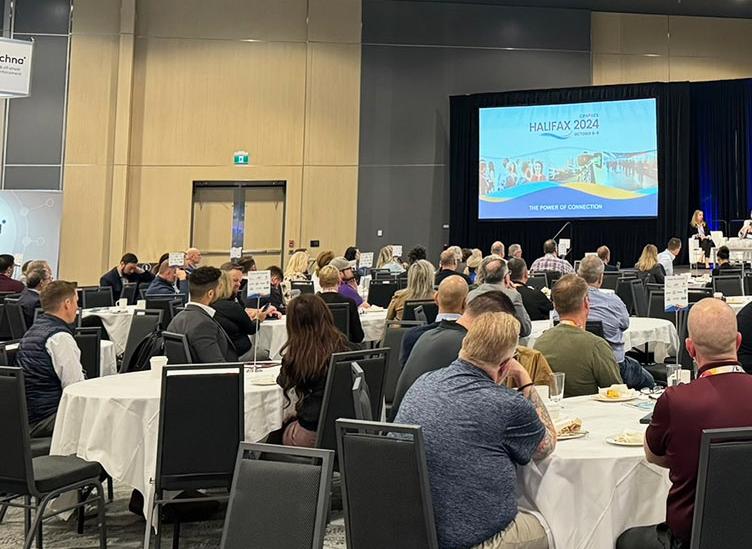
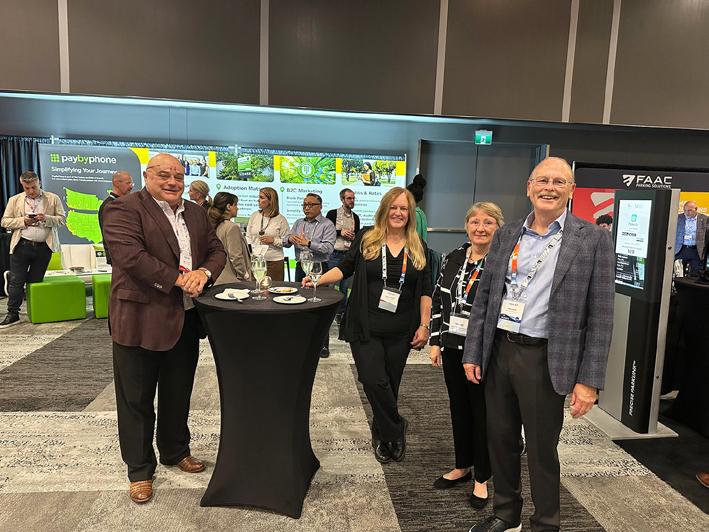
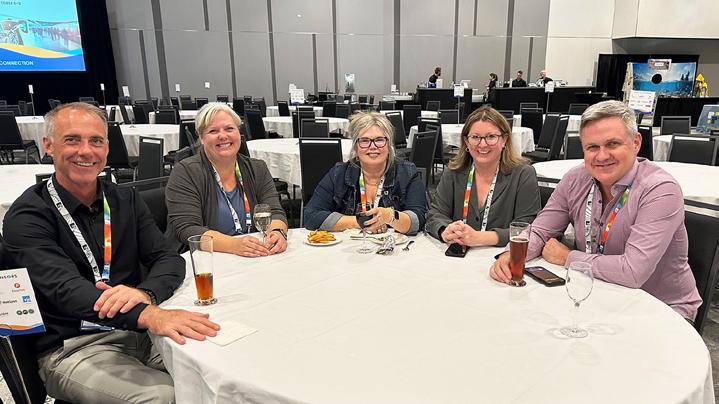
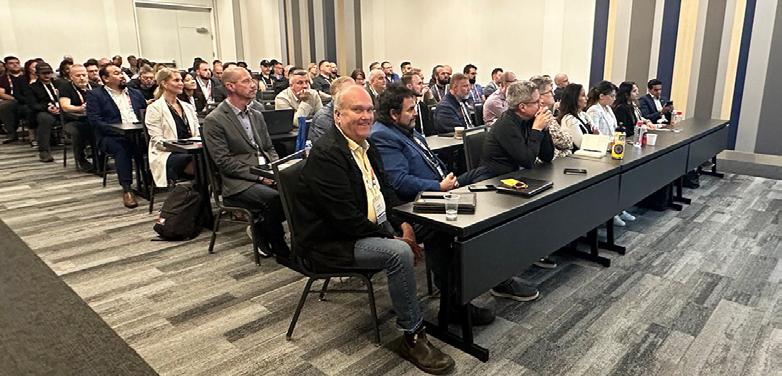
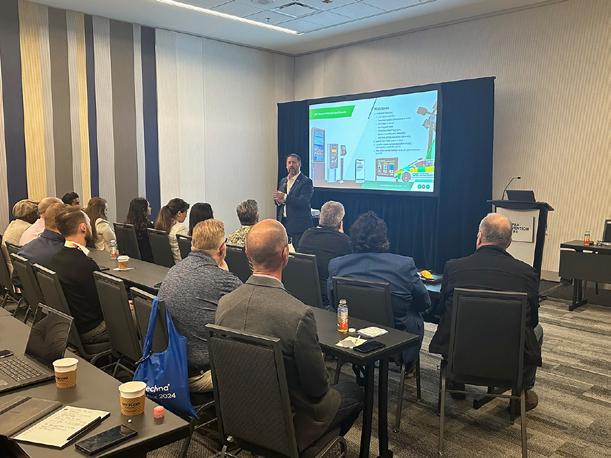

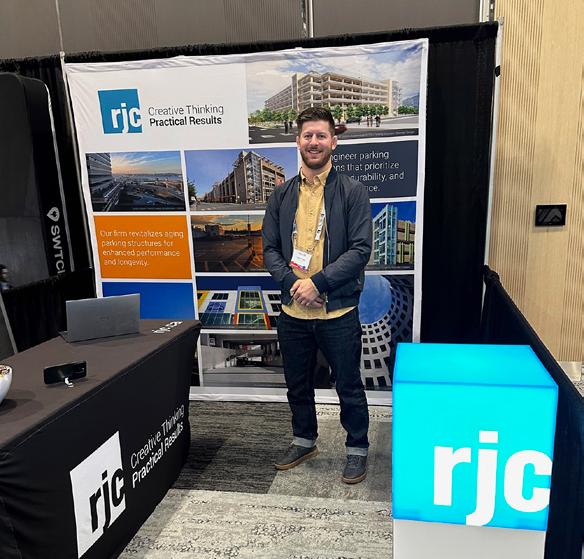
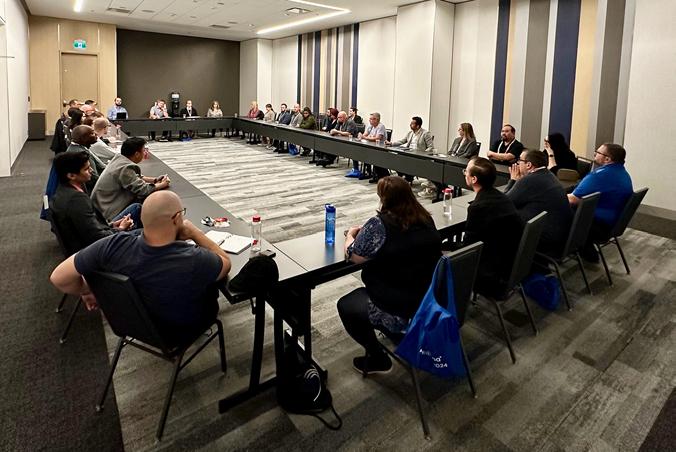
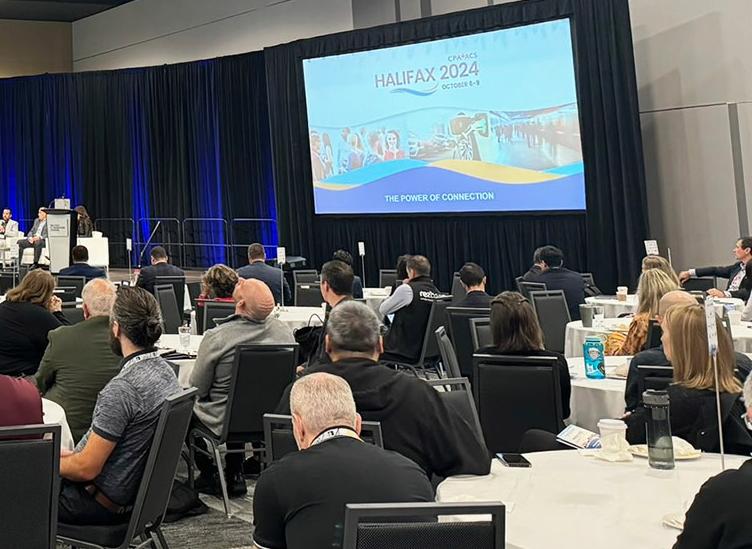


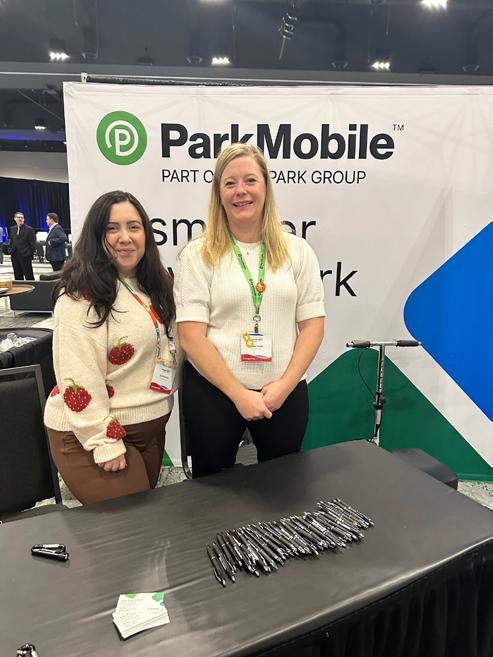
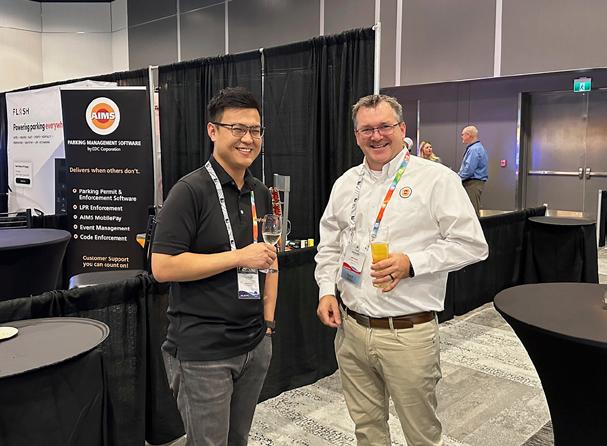
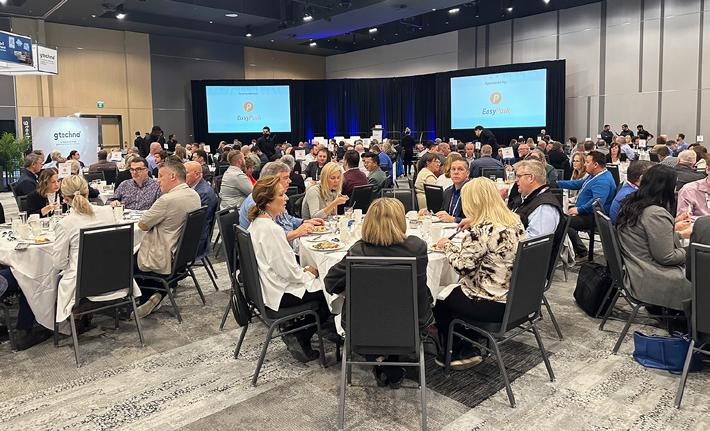





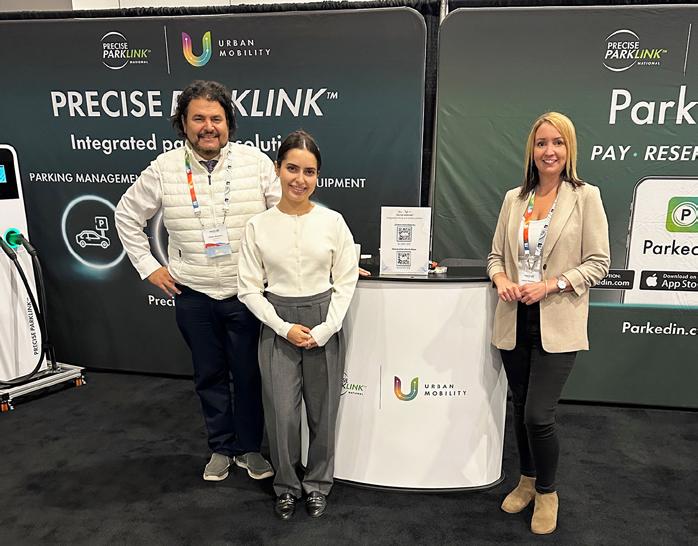

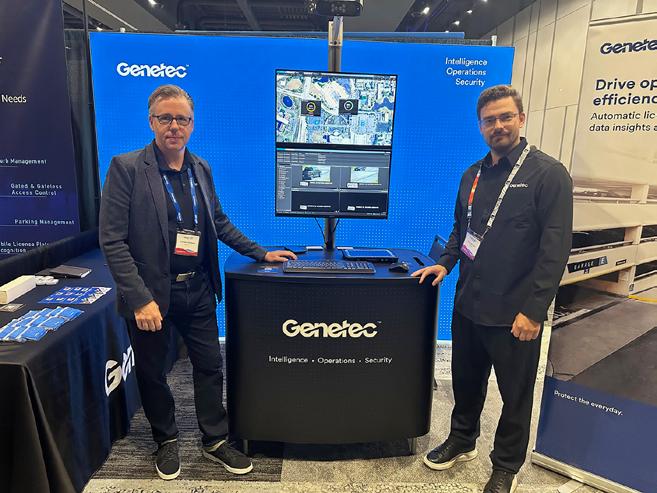





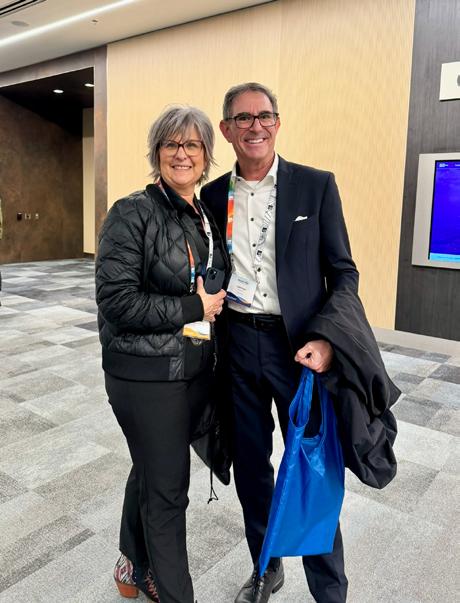

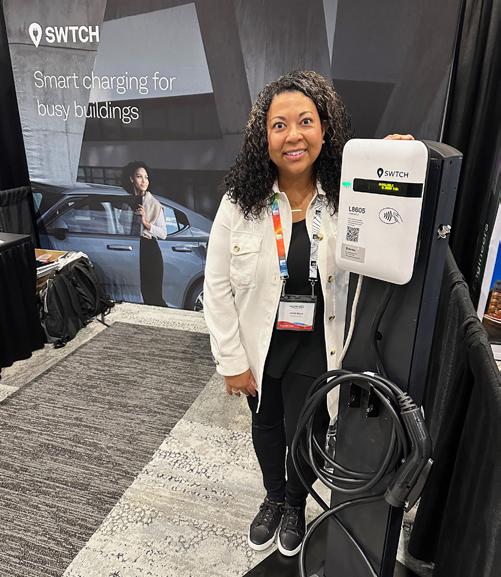

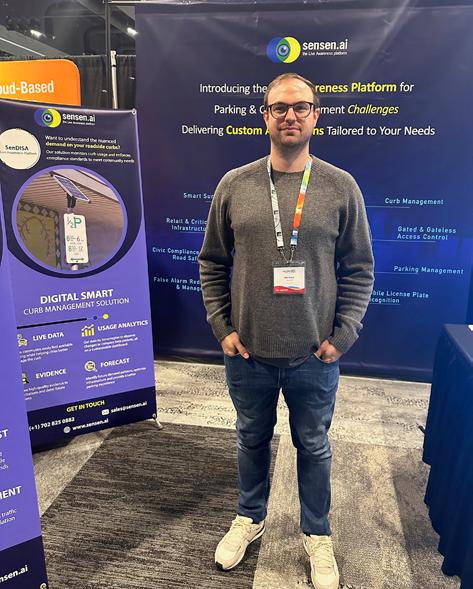

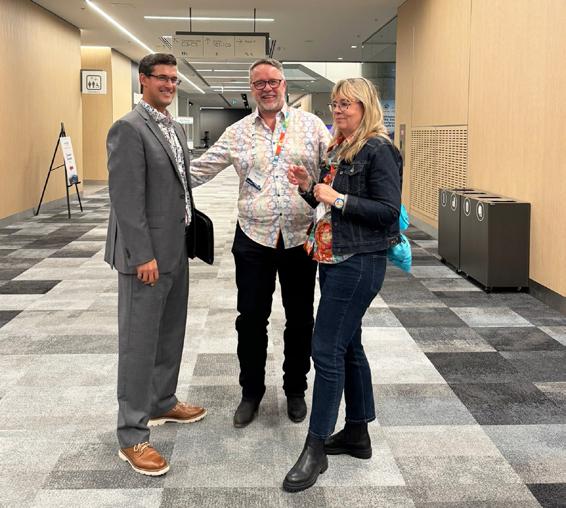
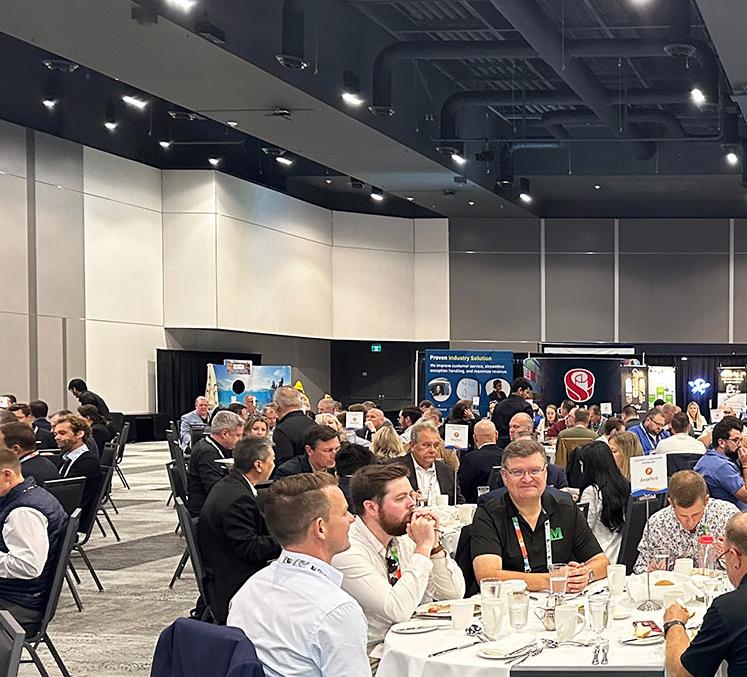
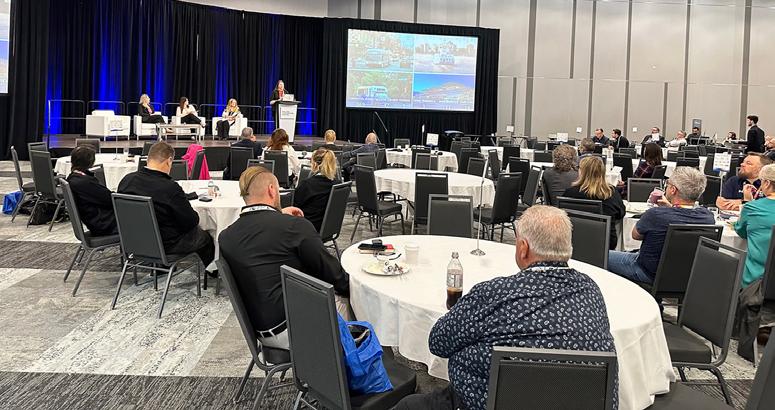


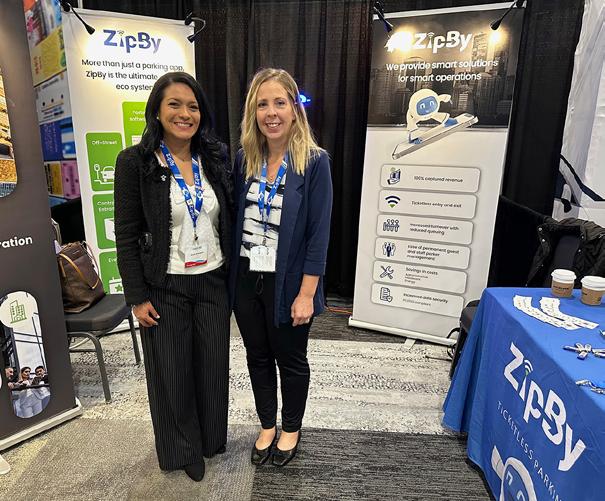
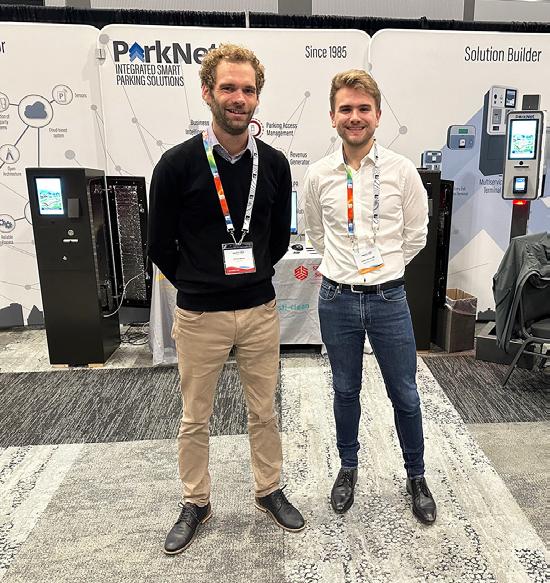
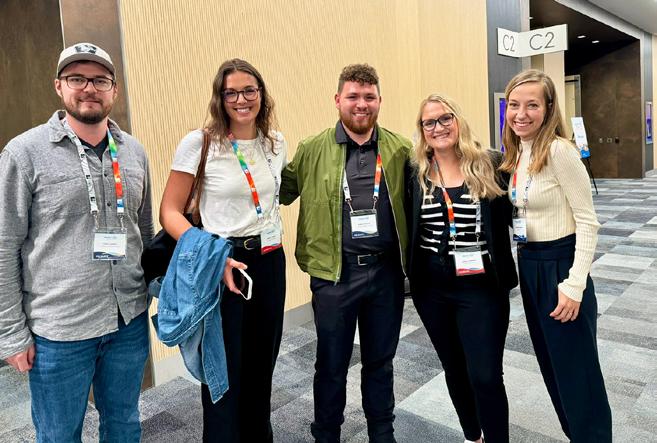


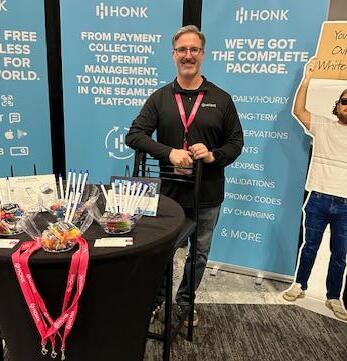

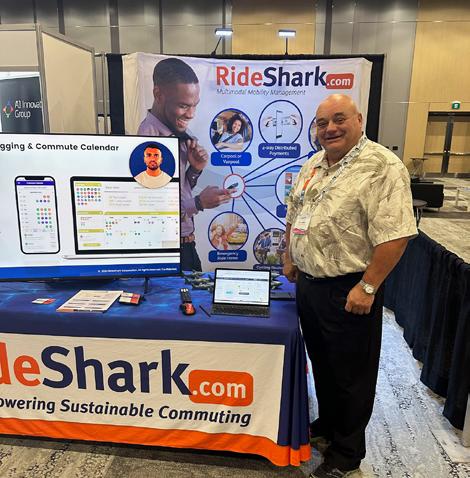

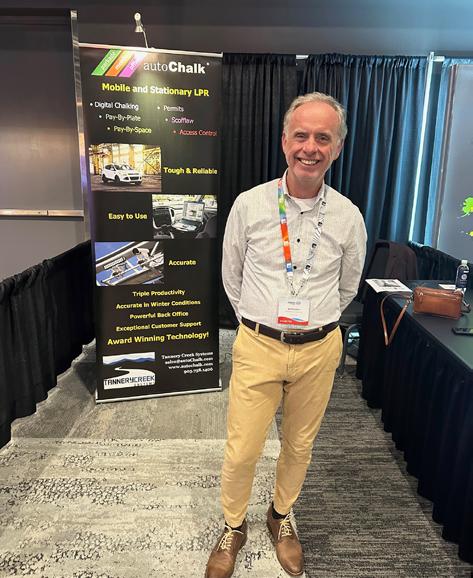
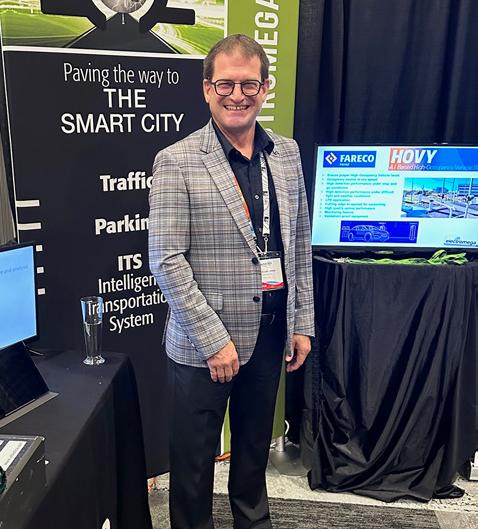
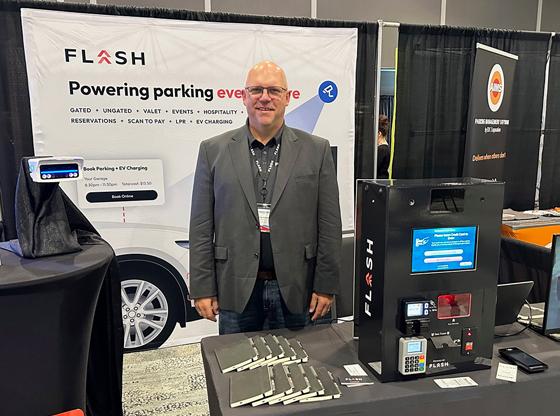
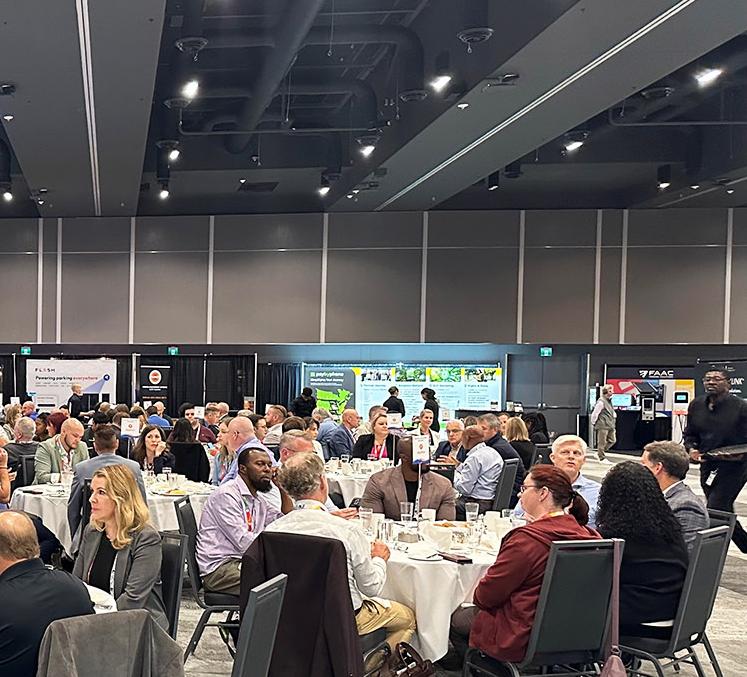
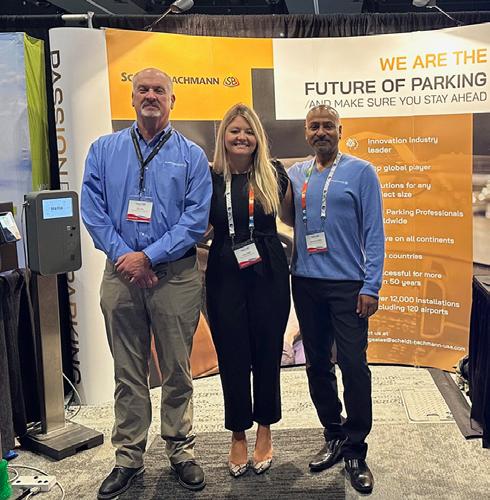
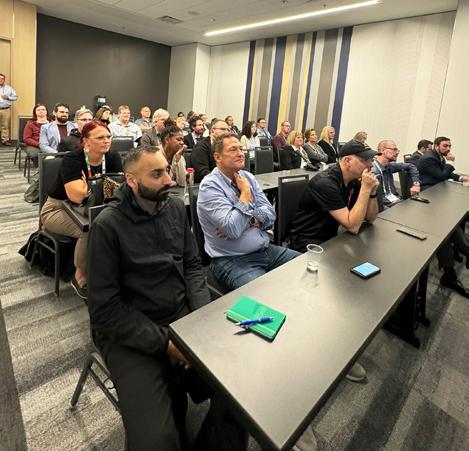
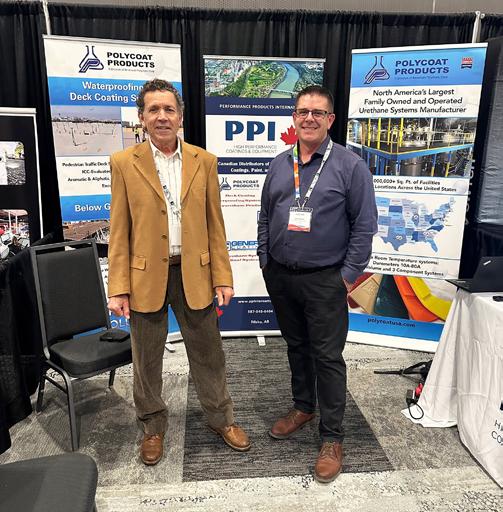

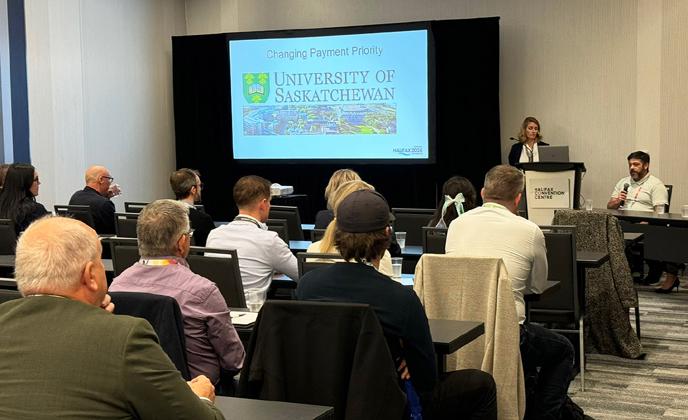

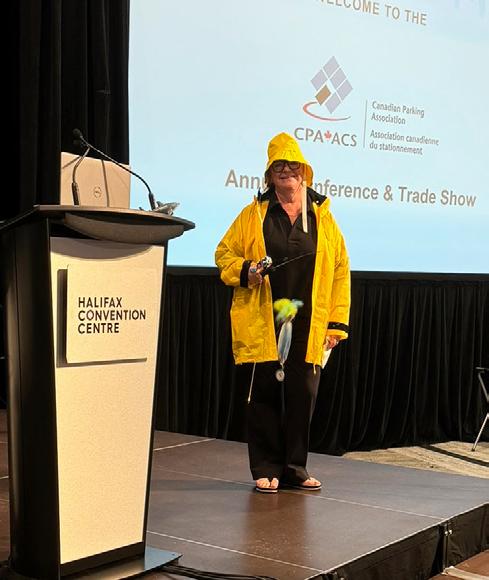

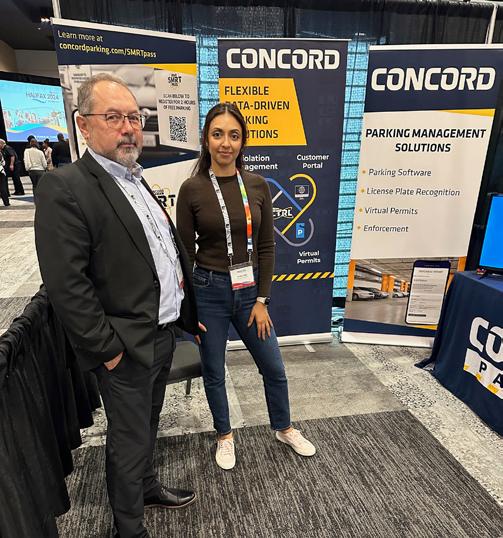


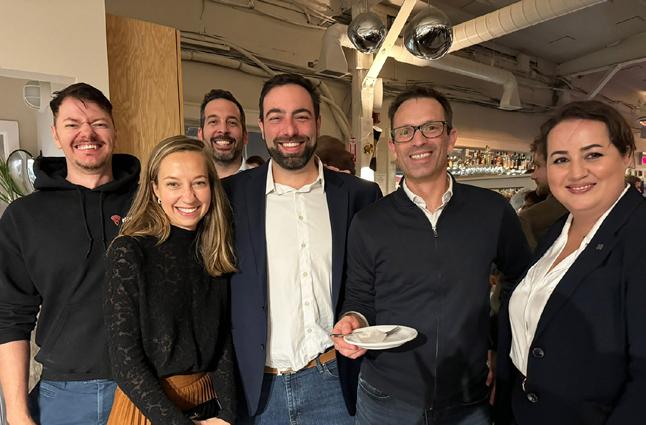


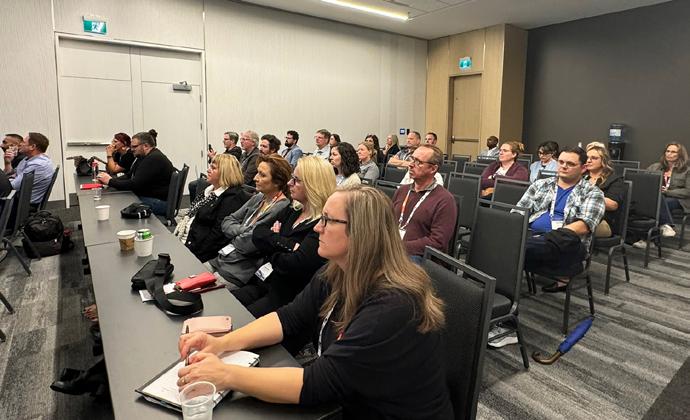
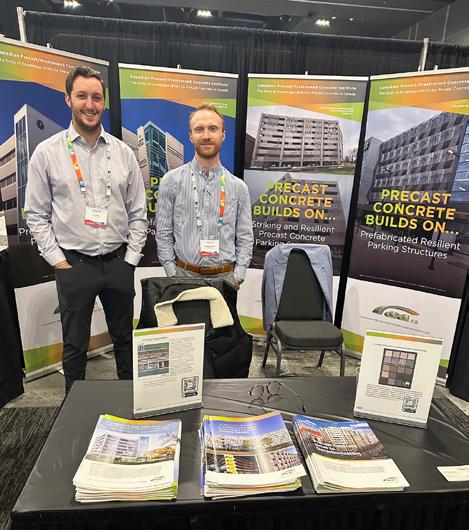

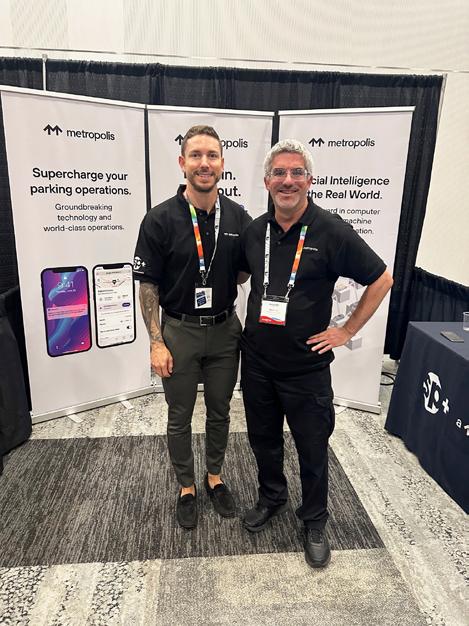
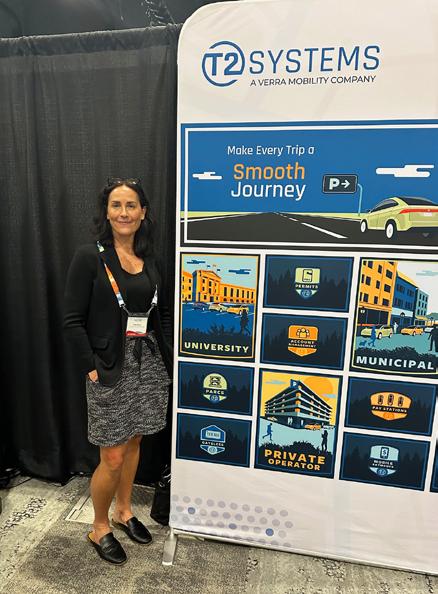
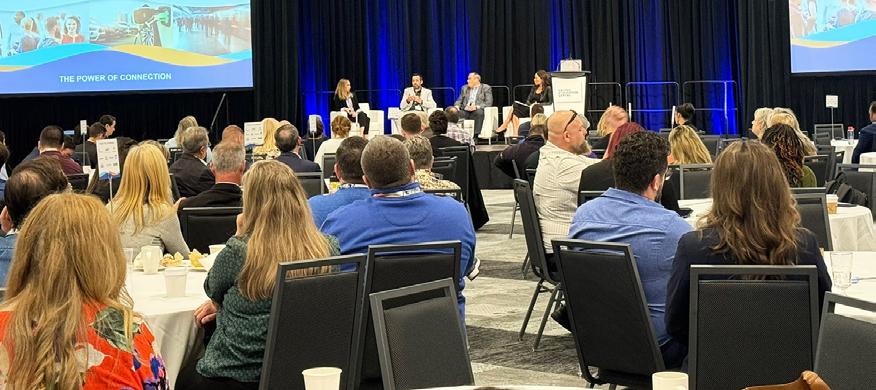

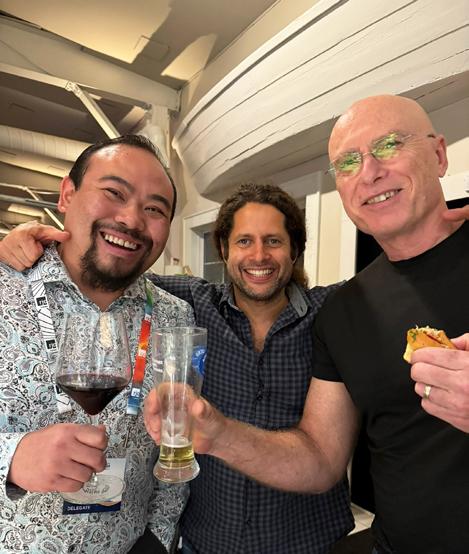
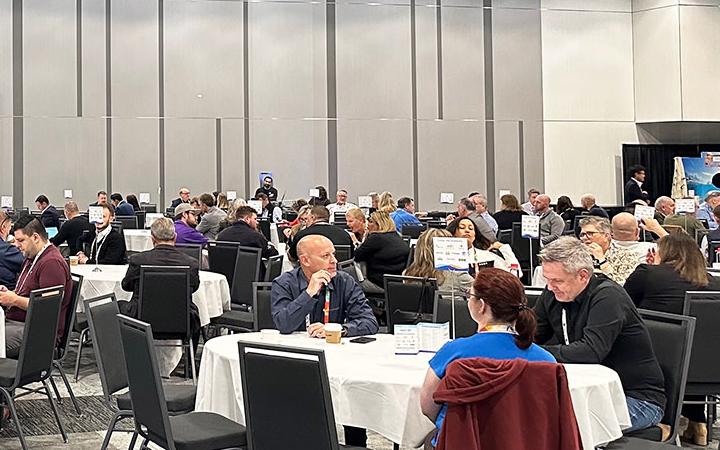
The success of the Canadian Parking Association is based primarily on the continued support of its members who strive for excellence in their field. Today’s parking industry is comprised of professionals from entry level to executive across a broad range of disciplines: planners; technical and environmental developers; financial experts; designers and builders; consultants; customer service representatives, to name a few. The collaboration between these professionals drives the industry to develop and achieve strategies that enhance the communities in which we serve and heightens awareness of the parking industry in Canada.

Steven Liu, a Client Services Specialist at EasyPark, exemplifies exceptional dedication and customer service in the parking industry. Known for his solutionsoriented approach and outstanding problem-solving skills, Steven consistently goes beyond his role to enhance the customer experience and operational efficiency. His efforts in refining EasyPark's validation process, streamlining signage, and improving marketing strategies have resulted in increased client satisfaction and revenue. A proactive communicator, Steven
collaborates effectively across departments, identifying and addressing potential issues to ensure safety and efficiency in parking facilities.
Steven’s commitment extends to mentorship, sustainability initiatives, and supporting team members during challenging transitions, such as the implementation of a new management system. He’s regarded as a key player for his deep industry knowledge, client-first attitude, and his ability to deliver high-quality, innovative solutions that benefit EasyPark and its clients. Steven’s contributions have solidified his reputation as an invaluable asset, making him a deserving recipient of the Parking Staff Member of the Year Award.
Ian Misheal
City of Kitchener

Ian Misheal and the City of Kitchener have pioneered a transformative approach to school zone parking enforcement with an AI-based License Plate Recognition (LPR) system and Ticket-by-Mail solution. This innovative system, the first of its kind in Ontario, improves safety around schools by reducing dangerous parking behaviors without the need for direct officer involvement. The AI LPR system automates the capture of parking violations and provides photo evidence, reducing disputes and ensuring fair enforcement.
The initiative has doubled enforcement productivity, allowing officers to cover all 50 school zones in half the time. Since its implementation, the program has increased school zone safety, officer security, and compliance with parking regulations, leading to a 25-35% increase in revenue from parking fines. The system is scalable and adaptable, with plans to expand it to other areas of the city, making it a model solution for municipalities facing similar challenges. Ian Misheal’s work has positioned the City of Kitchener as a leader in parking enforcement innovation, setting a new standard for efficiency and safety.
Precise ParkLink Inc.

Luigi Lato, Chief Operating Officer at Precise ParkLink Inc., has been a transformative figure in the Canadian parking industry for over 25 years. Leveraging his background in IT and telecommunications, Luigi has driven innovative solutions at Precise ParkLink, including License Plate Recognition (LPR), contactless permits, PCI-compliant processing, and dynamic pricing. Under his leadership, the company introduced the award-winning IPARC™ facility, integrating advanced remote monitoring and virtual customer service. His expertise has led to partnerships with major clients like the Greater Toronto
Airport Authority and Toronto Parking Authority, as well as global technology partners Skidata and Flowbird, bringing cutting-edge solutions to Canada.
Luigi's commitment to innovation has fueled Precise ParkLink's growth from a small team to over 1,000 employees managing 1,500+ locations. The company now supports 20,000 parking devices, oversees 500,000 permit subscribers, and processes more than $2 billion in annual revenue. Luigi’s hands-on approach, technical acumen, and client-first philosophy have made him a respected leader in the industry, positioning Precise ParkLink at the forefront of parking and mobility innovation. His lasting contributions to the industry exemplify his dedication to excellence, making him a deserving recipient of the Ted Seeberg Memorial Award.
Carole Whitehorne
Canadian Parking Association
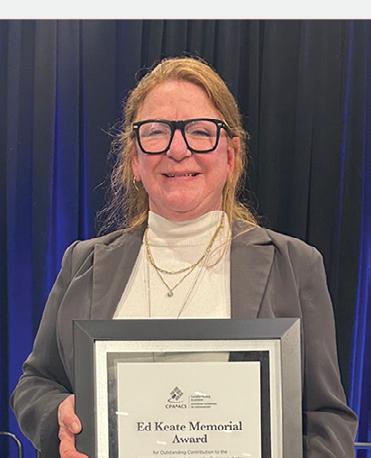
Carole Whitehorne, Executive Director of the Canadian Parking Association (CPA), has been a driving force in advancing industry knowledge for over 23 years. Her leadership has transformed the CPA into a hub of learning and innovation. Carole is best known for orchestrating CPA’s annual conference and trade show, a major educational event that connects industry professionals across North America. Beyond this visible achievement, she has championed initiatives like CPA’s PARKER magazine, regional workshops, training
programs, and an awards program that celebrates education and leadership within the industry.
During the pandemic, Carole’s collaborative efforts with the National Parking Association (NPA) led to the creation of SafePark guidelines, ensuring safe practices across Canada through the Blue Ribbon Commission. Her commitment to CPA’s mission—enhancing industry standards, networking, and professional development—reflects her dedication to fostering growth and expertise in the field. Carole’s impactful contributions have solidified her reputation as a leading advocate for knowledge and development within the parking industry, making her a deserving recipient of the Ed Keate Award for Outstanding Contribution to Advancement of Knowledge in the Parking Industry.

By Ebby Zachariah and Chris Perry
Over the past 20 years mixed-use development has become a staple of urban development in Canadian cities. It’s easy to see its appeal for developers and property owners. By combining several different use cases within a single development, developers and owners can benefit from a variety of potential revenue sources. And the diversity of uses can provide stability because when one sector slows down there will be one or more other uses remaining to pick up the slack.
Typically, owners and developers—and urban planners, for that matter—view mixed use solely in the traditional context of a development combining parking, and then some mix of retail, commercial, residential, and/or entertainment development. But there’s another form of mixed-use development that’s worth considering: parking. Yes, just parking.
As parking professionals, we instinctively understand how a development that revolves solely around parking can be an example of mixed-use. Most parking facilities serve multiple user groups. These groups have different needs, use parking assets differently, and may pay different rates. This is true of commercial, residential, and even institutional development with parking assets.
When parking owners start to think about their parking assets in this context, it opens up a whole new world of revenue and tenant amenity opportunities.
Until recently, it wasn’t possible to manage parking assets effectively and efficiently when there were multiple use cases. Parking had to be treated as an afterthought at best—and a throw-in at worst—because parking management wasn’t automated. It was just too costly and timeconsuming to manage different parking use cases by hand.
With the emergence of parking management software platforms, however, owners can now manage each user group differently, providing access to specific areas of a parking facility, offering access at various times, and even allowing them to charge different rates to different users. This presents extraordinary financial and tenant amenity opportunities to owners and developers.
Before we discuss the different ways that developers and owners can benefit from managing their parking assets with parking management technology, let’s first look at how it works. The heart of any parking management system is the software that runs it. The best platforms can be customized to allow owners and developers to address their unique parking management needs, as well as the unique needs of their tenants and customers. The software stores information about each parking user’s parking needs to build an individual use case for that user. The use case determines how the parking can be utilized, managing things like when and where the vehicle owner can park; whether they will be charged and, if so, how much; and whether the
owner has access to a guest pass and, if so, how much they will be charged for each pass. The software should also have a robust accounting element that will automatically collect parking fees, transfer those fees to the appropriate bank accounts, calculate tax requirements, and provide accounting and tax reports to both the owner and the tenant.
There’s also a hardware component. Typically, parking entry and egress is monitored by license plate recognition (LPR) technology. When tenants or visitors drive into a parkade or parking lot, the LPR cameras record the license plate information and associate the parking stay with an account. The same happens when the car leaves. Once the stay is over, the systems determines whether a parking fee is indicated and automatically charges the appropriate account. If the vehicle has a permit, the system associates the stay with that permit.
Now let’s look at specific types of parking facilities and how parking management technology works to manage different use cases.
Residential developments typically offer permit parking, with tenants provided one or more parking spaces as part of their lease agreements. The process is relatively straightforward in this case. The system merely monitors incoming and outgoing traffic and associates the vehicles with the appropriate resident permit.
Residential complex owners also commonly provide guest parking passes to tenants. Historically, this has meant giving guests paper passes that can be left of the dashboards of visitors’ cars to alert enforcement personnel that the car is authorized to parking there. This low-tech approach limits how much you can do with guest parking.
However, using parking management technology allows you to manage guest parking much more closely and creatively. Owners can determine how many guest passes tenants can have on a given day, week, month, quarter, or year—really any period of time. The system can also manage when during the day guests can use the parking. The technology also makes it easy to monetize guest parking. For instance, owners can charge a fee for each guest pass, which can automatically be added to the tenant’s monthly rent bill. Of course, the system can also automatically collect the guest parking fee and distribute the fees to the appropriate bank account or accounts. The system can be set up to provide regular reports so the owner or parking operator can keep track of how guest parking passes are being utilized.
The same considerations are in play for commercial or retail parking facilities, which typically serve a variety of different types of users. These may include employees of commercial tenants and visitors to those tenants, or customers and employees of retail establishments. Just as mixed-use developments have several distinct types of tenants, each tenant has several distinct types of parkers, each with its own unique needs. Parking management technology can be customized to recognize the unique needs of each and manage each one.
Parking management technology allows developers and owners to focus on the multiple uses that happen in their parking facilities. As a result, they can manage their parking assets more effectively, efficiently, and perhaps most importantly, more profitably.
Using the technology presents a win/win/win scenario that benefits parking owners, tenants, and parkers. As we’ve discussed already, owners derive numerous benefits. The technology makes managing parking much more efficient and cost-effective. It gives owners the power to automatically manage parking for multiple use cases and to customize parking management to meet the specific needs of their tenants. It also provides powerful accounting benefits by collecting parking fees and automatically distributing them to the appropriate bank accounts.
The technology can also benefit the bottom lines of parking owners. When you have this much control over parking assets it makes it easier to maximize parking revenues. For instance, the accounting reporting that comes with the technology allows owners and operators to be sure that they are charging enough for parking and receiving all the parking revenues they are entitled too.
Tenants benefit too by having the guesswork that’s so common with parking management eliminated. The technology seamlessly manages parking spaces, so tenants know exactly how their allocated spaces are being utilized. The accounting features assure that parking fees are charged from the appropriate bank accounts, so there are never surprises.
And finally, drivers benefit from an improved parking experience. The experience is entirely frictionless, with drivers just driving in and out of parking facilities without having to stop to pull a ticket or pay. n


ABOUT THE AUTHORS:
Ebby Zachariah is founder and CEO of Parking Base, the leading provider of cloud-based parking management solutions. He can be reached at ebby@parkingbase.com.
Chris Perry, CAPP is Parking Base’s Senior Vice President of Sales and Operations. He can be reached at chris. perry@parkingbase.com.

The CPA is inviting submissions from industry experts who will provide dynamic and interactive programming as part of the overall conference learning experience.
Opportunities will be reserved for engaging presentations that can deliver diverse topics of interest and unique concepts that provoke thought, discussion, and guide the direction of the future parking and mobility industries.
• Blending Parking & Mobility –Finding the Balance
• Curbside Design & Management
• Industry Disruptors: Embrace or Avoid
• Parking Concepts in New Urban Design
• Car Share / Ride Share
• Parking in a Multi-Modal Community
• Solutions to First & Last Mile Commute
• Electric Vehicle (EV) Parking
• Pacing Technology Changes: LPR, Mobile Apps
• Infrastructure: Facilities, Operations, Management
• Structures: Is your Asset Becoming a Liability?
• Facilities Maintenance Plan
• Data: Revenue, Occupancy, etc.
• Developing an RFP
• Service: Valet and Event Parking
• Human Resources, Training & Personal Development
• Emergency Preparedness
Topics should focus on present-day and near future developments, as well as long term scenarios that are relevant to a variety of parking and mobility interest groups. From data collected through the 2023 post-conference survey, the following ranked very high, and are listed in order of preference. Members from the Airport, Campus, Hospital parking operations are looking for sector-specific content:
We will work with you to provide a program that reflects the audience’s desired programming, based on the 2024 postconference survey results. The suggested formats below are samples of how we can innovate and create new concepts to deliver the program. Your suggestions are welcome.
Innovators, Vendors, Consultants, Operators will collaborate to host and moderate a new session format that will engage attendees in a round table discussion on a specific topic. Session content may not be proprietary and will focus solely on understanding and advancing the industry. Suggested topics may include technology/equipment integration, AI applications, recent advancements in parking operations, etc. Limited to three sessions scheduled on Sunday, Oct 5 following the Sector Round Tables. Can be company-exclusive with Sponsorship.
CASE STUDIES: Municipal, institutional, private operations and consultants share timely information on actual projects from start to finish. Regardless of the outcome, shared experiences and lessons learned can provide insight for those contemplating a similar project.
PANEL DISCUSSIONS: Form a panel of subject matter experts to share in an interactive presentation focused on a mutual experience. Presenters are given time to discuss their perspective, and the audience then joins in a Q&A session. (Maximum of 3 panelists per submission.)
SECTOR FIRESIDE CHAT: A selection of leaders from the airport, hospital, municipal or university may host an informal discussion about issues facing their sector. This is an opportunity to expand on issues raised during the popular round table sector meetings.
WORKSHOPS: Design a workshop that will involve learning opportunities on specific topics. Through interactive discussion and/or exercises attendees will leave with valuable information to implement at their operations. Topics could include Current and Future Practices, Leadership, Equipment Maintenance, Data Collection, Human Resources, RFP Development, etc.
HOSTED FOCUS GROUP: Conduct a focus group to gather feedback from the attendees on your topic (EVs, LPR, PARCS, APPS, etc.). Scheduled outside of exhibit hours as a component of the educational program, sessions can be branded by you and can be by invitation only. (Some fees may apply.)
Submissions must include all speakers’ names, company names, email address, and acknowledgement of their willingness to participate in the presentation DURING THE SUBMISSION PROCESS. Abstracts with missing information or with Speaker(s) TBC will not be accepted.
Changes, additions, and substitutions will be considered on an individual basis.
Participants agree to provide a summary article suitable for publication in Parker magazine after the conference.
The introduction of different session formats will offer variety to attendees to network in an open exchange to learn new skills, and gain knowledge and insight into the evolving parking and mobility forum and equip themselves with the essentials to develop a go-forward action plan in a fun way.
The individual submitting the proposal must also be the presenter and main contact for further communications. All co-presenters and panelists must have agreed to participate and be identified during the submission process. Substitutions of presenters and panelists will not be allowed after the closing date and will result in the presentation being disqualified.
Submissions will be evaluated based on quality of topic content and format as presented in the abstract, relevance of content to the current environment, innovativeness, learning objectives provided, range of interest and schedule availability.
Suppliers of equipment or services are required to be registered as an exhibitor or a sponsor for their submission to be considered. The CPA reserves the right to select or augment the submissions to best reflect a full educational program. If more details are required, you will be contacted.
All presentations must be non-proprietary and may not be used as an opportunity to promote brands, products, or services in any way. All commercial activities will be limited to the trade show area for registered exhibitors only.
If your submission is accepted, you will be informed by email on or before April 15, 2025
Confirmation of participation from all presenters and copresenters must be returned by that date to secure a time slot, after which time the offer may be rescinded.
Conference registration is required by each presenter, and all personal expenses will be their responsibility.
Speaker Acceptance, headshot photos and introduction bios (limit to 500 words or less), must be submitted by the determined deadline.
All PPT presentations must be submitted using the CPA’s conference template by the pre-conference deadline stipulated. n
Electric Vehicle Performance in Extreme Winter Conditions

BY WAYNE SUM AND BILL FRANKLIN
Few denizens of Canadian cities give thought to the sophisticated and robust civic infrastructure and organization that enables a safe and enjoyable life whether uptown, downtown or in suburbia. Clean, well lit, well built and maintained streets, effective policing, parking, garbage collection, water and sewage, libraries, parades, medical centers among a multitude of other services all directly impact the satisfaction and safety of city residents.
Management of a dynamic and resilient city will consider key factors that can be employed in an emergency, whether it be political protests, rampant homelessness to fires, flooding or intense cold and blinding snow.



As the fires in California vividly attest, global warming and drought has intensified the desire to reduce reliance on internal combustion engines in favour of electric vehicles that get their energy for locomotion directly from the sun, wind or water (hydroelectric). In this article, we look at the challenges of achieving an all-electric fleet while retaining the resilience required from municipal services.
CONSIDERATION OF EV’S TOUCH ON THE FOLLOWING TOPICS:
• Saskatoon’s Electric Vehicle goals
• Electric Vehicle (EV) performance in general
• A closer look: Nissan Leaf
• Winter Driving Conditions and impact on EV driving range
• Theoretical look at
• Impact of cold on battery performance
• Impact of cold on power consumption
• Real World Tests: Consumer Reports, American Automobile Association
• City of Saskatoon’s pilot EV experience
• Recommendations to advance electrical vehicle utilization
The road to reducing Saskatoon’s carbon footprint starts here...

In July 2021, Saskatoon began its Electrical Vehicle (EV) Adoption Roadmap. The objective was ambitious: all municipal & transit fleet to be fully electric by 2030. This would include buses, utility vehicles, snow clearance, garbage trucks among other equipment.
THE OBJECTIVES WERE:
• Re-evaluate corporate fleet in context of EV Determine costs & savings associated with EVs
Assess durability, viability & required infrastructure change
Ability to purchase electric vehicles in a normal purchasing process (RFP)
• Assess real world EV performance: pilot 4 EVs in 3 departments (Chevrolet Bolts)
Although electric vehicles are having substantial success such as in California where the percentage of EV’s (especially Tesla)
is amazingly high, locations where winter conditions are harsh and long significantly impact EV performance. Cold temperatures sharply diminish battery capacity and significantly increase energy consumption.
Since the internal combustion engine has been around for over a century, engineers and manufacturers have improved both engines and vehicles to face extreme cold. At times Saskatoon dips to minus 50 C yet their diesel and gas powered vehicles, trucks, tractors, snowplows, SUVs are out in the field doing their job and indeed are expected to perform.
WHAT THEN SHOULD BE EXPECTED OF AN ELECTRIC VEHICLE?
Operates in temperatures from -50C to +40C
Runs all day on a tank of fuel or an electric charge
• Starts up reliability every morning and runs all day, month after month
Is comfortable to drive (e.g. warm interior in cold weather), has storage space, can have equipment mounted to it (e.g. License Plate Recognition equipment)
• Fleet services can maintain it and get parts
• Purchase price of CAD$40,000 or less for an EV SUV
• Maintenance cost is reasonable
Infrastructure cost is affordable
Replacement of an ICE vehicle with electric vehicle is a 1 for 1 exchange
Tesla and Nissan have been producing electric cars and SUVs for fifteen years and Toyota has sold the very successful Prius hybrid since 2000. It seems reasonable to conclude that electric and hybrid vehicles already fit the bill. However, unlike hybrids, EVs store their fuel in the form of electrons and in batteries, and these devices differ radically from the internal combustion engines and their fuel system.
IN SHORT THE CITY WANTED TO PILOT TEST ELECTRIC VEHICLES TO SEE IF:
• Too cold on occasion to operate vehicle?
• Will it run 14 hours continuous? Is 24/7 operation possible?
• Is it reliable? Day after day, month after month in same conditions as an ICE vehicle?
• Able to operate ancillary equipment e.g. LPR?
• Does it have the same productivity?
• Which vehicles can be an EV?
• Equipment where waste energy can be easily recovered and converted to stored electrical energy is good.
• An SUV has considerable kinetic energy that can be recovered and stored in a battery and is a good choice
• A bulldozer or grader does not have readily available convertible energy hence bad choice
• BOTTOM LINE: can we simply replace an ICE vehicle with an EV?

In our analysis, we looked most closely at the very popular and reasonably priced Nissan Leaf, as there was more data to work with, the price range attractive to cities and its similarity to the Chevrolet Bolt, a domestic EV that some of our clients have bought.
The Nissan Leaf and the Chevrolet Bolt driving range fall in the middle of the pack as the table shows.
Examples of EPA1 range at 25 C
COLD TEMPERATURES BRING ENERGY SAPPING CHALLENGES SUCH AS:
Snow covered roads significantly increase rolling resistance
• Rolling resistance increases as grease and oil become stiffer
• More equipment is used such as:
- Head lamps and running lights
- Windshield defroster (heat and fan)
- Air conditioner (for drying the air and defrosting)
- Seat heater
- Cabin heater
1 Estimates by the American Environmental Protection Agency (EPA)

EPA driving range is a mix of highway and city driving at a temperature of 25 C, a temperature admirably suited for southern California. Alas, Saskatoon, most of Canada and the northern American states do not enjoy such a mild climate for a sizeable part of the year, hence we need to look at the impact of cold weather.
NOTES:
(1) Defrost (and hence air conditioner) on intermittently (20%)
(2) Vehicle driven with defrost always on, hence AC continuously on (i.e. 100%)
- Rear window heater/defroster
- Windshield wipers (front and rear windows)
- Windshield fluid pump
- Vehicle emergency lighting platform
The cumulative impact of these energy demands significantly diminishes rated range of gasoline or electric powered vehicles. However, a tank of gas will retain its energy capacity, i.e. it is not diminished by the cold. Batteries, on the other hand, do not fare as well. Their energy capacity is significantly reduced by cold temperatures.
LITHIUM-ION BATTERIES DEMONSTRATE THESE CHARACTERISTICS:
• Full charge typically rated at 25 C
• As temperature drops both voltage and amp hour capacity decline so total stored energy declines significantly
• Stored energy at -40 C in battery is roughly 65% of that at 25 C
• Results in one-third loss of operation time and/or distance
The pictured graph is a Panasonic Li-ion battery which is similar to that in a Tesla or Nissan Leaf

The following table (A) shows the power consumed to propel a vehicle at 40 km/h and the load of typically used auxiliary equipment. The target vehicle is a Nissan Leaf which has a standard 40 kilowatt hour (kWh) Lithium Ion battery pack and an optional 60 kWh battery. In this analysis, the 60 kWh battery is used (216 mega-joules).
(3) Battery capacity (60 kWh @25C) degrades about 30% at -30 C to 42 kWh
(4) Typical power consumed to move a vehicle at 40 km/h on a smooth dry road
(5) Power in watts (W)
(6) Battery capacity is in kilowatt hours (kWh)
(7) Approximate and to the closest half hour or 50 km

OBSERVATIONS:
In theory, driving the Leaf at a steady 40 km/h on a smooth flat paved dry road with no wind and a temperature of 25 C should see it go very far, close to 600 km.
In practice, it all depends on the equipment being used (e.g. air conditioning), wind conditions, traffic and terrain
• Cold weather performance drops the distance and time by about 50%
• Running defrost continually will drop it further to about 30% of ideal range
• Snow greatly increases rolling resistance, decreasing range even more
• autoChalk (an LPR system) consumes 100 watts on average, which is about 1 to 2% of the total energy consumed by the Leaf at 40 km/h hence has little impact on the vehicle’s battery life.
Hence it seems the likelihood of an electric vehicle running all day is slim, and more likely to be about half of one day. For example ensuring about 20% battery capacity is left at the end of the use of the vehicle (to avoid getting stranded) would reduce 5 hour operation time to 4 hours.
MOREOVER THERE ARE OPERATIONAL PROBLEMS WITH THE LEAF AT COLD TEMPERATURES:
• the vehicle cannot be charged if the temperature is -20 C or colder the vehicle is not recommended to be stored outside at temperatures of -25 C as the Lithium-ion battery can freeze and malfunction
Here’s an example from the Nissan user’s manual:

Other reputable organizations tested electric vehicle range in cold weather and include Consumer Reports and the American Automotive Association. Their winter testing and the degradation was similar to the predicted impact that we had calculated, for example at minus 20 C all vehicles’ range dropped to about 50% of that measured at 25 C.
The City of Saskatoon has 170 buses. Batteries range from 300 kWh to 500 kWh. Let’s pick 400 kWh. Let’s suppose the buses are recharged between midnight and 6 am.
Hence the total capacity of all buses is 170 * 400 kWh or about 68,000 kWh.
Since the batteries take 6 hours to charge, the average charging per hour is about 11,000 kWh. At 240 volts that’s a current of 47,000 amps which is the equivalent of 470 homes (100 amp service). Explore the electrical demands with your electric utility.

2 Source ExtremeWeatherWatch.com

Notice cold extremes have continued to occur despite climate change and have remained quite similar for the last 130 years. The city must work with actual data and plan around this reality.
A REALITY CHECK IN 2024:
• City experienced two major snowstorms
• Record breaking snowfall (~40 cm in 24 hours) & high winds
• City-wide “snow day” declared with civic services shut down.
• Chev Bolt charging stations
• No palm trees here!
HERE’S A SUMMARY OF SASKATOON’S WINTER EXPERIENCE WITH CHEVROLET BOLTS:
Depleted battery reduced range (down ~20 to 30%)
• Constantly getting stuck in snow Cabin temperature was hard to heat
• Battery recall forced outdoor parking
• Charging station issues and long recharge times reduce vehicle availability
• This means one ICE vehicle may have to be replaced by two or even three EVs
• This fiscal reality raises difficult questions The quantity of the charging may strain the grid and require very expensive upgrades
HOWEVER, IT WAS NOT ALL BAD. DURING THE WARMER MONTHS THE BOLTS PERFORMED WELL:
• Excellent range & mileage
Positive reduction in overall fuel costs
• Reduction in overall corporate GHG emissions
Let’s review again what should be expected from an ICE or EV vehicle?
REGRETTABLY THE NO LIST IS PRETTY LONG. PERHAPS THIS IS WHY EV’S ARE GETTING A FROSTY RECEPTION IN SASKATOON:
Only 100 Battery EV’s registered in Saskatchewan
• City of Saskatoon built 4 free public charging stations
• Collectively used only 3 times a day
• Tepid interest has raised considerable debate
• Some public questioning expense
• Does the city lead or follow public adoption?


Operates in temperatures from -50C to +40C No
Runs all day on a tank of fuel or an electric charge
No
Starts up reliability every morning, runs all day, month after month No
Is comfortable to drive (e.g. warm interior in cold weather), has storage space, can have equipment mounted to it (e.g. License Plate Recognition equipment)
No
Fleet services can maintain it, get parts Yes (see note 1)
Purchase price of CAD$40,000 or less for an EV SUV Yes
Maintenance cost is reasonable Yes
Infrastructure cost is affordable and feasible (e.g. electric grid) Maybe
Replacing an ICE vehicle with EV is a 1 for 1 exchange

No
Note: assumes fleet management will implement a training and hiring program for EV technology skills.

HERE ARE IDEAS TO BEGIN PILOTING EV’S.
• Pilot EVs with demands that are not critical - equipment that will not be missed if not working - e.g. SUVs used for staff
• Mission critical transport not advisable
- Police, ambulance, fire
- Snowplows, service vehicles (e.g. grid support)
Explore pragmatic alternatives such as hybrids. For instance, the Toyota Rav4 plug-in EV provides electric-only range of about 60 km (likely 40 km in deep freeze season).
OTHER ADVANTAGES OF HYBRIDS:
Hybrids & Plug hybrid alternatives can run all day
• Significantly reduce carbon fuel consumption for short haul trips
Work reliably in bitter cold
Makes a big step to carbon reduction
• A reliable solution for cold climates
Does not need huge electrical infrastructure changes
In conclusion, EVs have a future in cold climates, but cities need to pick and choose the most appropriate solutions that meet their reliability, resiliency and performance goals. n



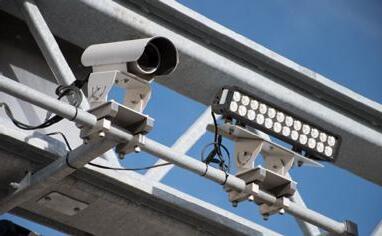



BY NIGEL BULLERS,
In a bustling city like Vancouver, where urban density and mobility challenges are constantly on the rise, creating a seamless parking experience is critical. EasyPark Vancouver, in collaboration with technology partners Fennix Systems and ZipBy, has taken a bold step toward revolutionizing the parking landscape. This summer, a groundbreaking technology pilot was launched at two of Vancouver’s busiest parking locations—Lot 19 and Lot 126/31—ushering in a new era of frictionless parking.
The initiative aims to enhance safety, efficiency, and sustainability while making parking as effortless as driving on a toll highway. The results are in, and the innovative solution is already making waves in the industry, setting a benchmark for what parking can—and should—look like in the future.
At its core, this project addresses a simple yet vital need: the demand for a faster, easier, and more secure parking experience. Traditional parking systems, with their reliance on ticket dispensers and manual payment methods, often create bottlenecks and customer frustration. EasyPark recognized that a transformative solution was needed to eliminate these barriers.
In partnership with Fennix and ZipBy, EasyPark deployed cutting-edge technologies designed to streamline every step of the parking process. The solution integrates Fennix’s AI-powered license plate recognition (LPR) cameras with ZipBy’s innovative mobile app, providing drivers with touchless entry, automated payment, and seamless exits. The system is designed to provide a “drive-through” experience, allowing customers to enter, park, and leave without ever interacting with a meter or gate.
This transformative approach relies on dual optical and infrared LPR cameras with an impressive 99% accuracy rate. These cameras identify vehicles in real-time, enabling the system to open gates automatically. Meanwhile, ZipBy’s app leverages Bluetooth and GPS to track parking sessions, notify drivers when a session begins, and email receipts as they leave.
One of the standout features of the ZipBy app is its ability to address real-world user needs. Customers want simplicity, convenience, and consistency—and this system delivers. Key features include:
• Auto-Pay Functionality: Drivers can enable automatic payments, receiving notifications on their smartphones or smartwatches as their parking session begins.
Rental Car Management: A rental car toggle allows temporary license plates to expire automatically, avoiding unintended charges.
• Pre-Authorization Before Gate Entry: Ensures users have a valid payment method on file, preventing delays at exits. Additionally, the system is designed to work seamlessly across both gated and ungated lots, eliminating the need for separate apps—a frequent customer pain point. This integration is critical in creating a unified, frictionless experience for all users.
The initial deployment has exceeded expectations. At Lot 19 and Lot 126/31, EasyPark observed a 20% reduction in entry and exit times, significantly improving traffic flow. Customers have expressed high levels of satisfaction, with 85% reporting the system as easier and more convenient than traditional methods.
One customer likened the experience to driving through a toll highway: “It felt like magic. No fumbling with tickets, no waiting—it was fast, easy, and hassle-free.”
The Gastown lot saw rapid adoption, with usage rates climbing to 35% on peak days by the end of summer. The system’s introduction at Pacific Centre during the holiday season, where only two of four lanes were converted, further demonstrated its scalability. With over 150 users per day, the numbers continue to grow, underscoring the strong market demand for frictionless solutions.
Beyond convenience, the new system has brought tangible safety and environmental benefits. The touchless entry and exit processes minimize physical interactions, reducing congestion and creating a safer environment during peak hours.
From a sustainability perspective, the system eliminates the need for paper tickets, lowering waste and reducing wear and tear on physical equipment. These efficiencies align with EasyPark’s commitment to environmentally friendly operations, reinforcing its role as a leader in sustainable parking solutions.
No innovation comes without challenges, and this pilot program was no exception. Integrating the frictionless parking solution with EasyPark’s older infrastructure required significant backend updates. The project team worked closely with vendors to ensure smooth compatibility and implementation.
Another challenge was GPS accuracy within the ZipBy app, which initially caused access issues for some users. These were swiftly addressed through app updates, improved signage, and customer education.
Lessons learned during the rollout also led to critical app enhancements. For instance, features like opt-out toggles for auto-pay and pre-authorization requirements were introduced to prevent errors and ensure a smooth user experience.
Deploying such advanced technologies requires a significant investment, including hardware, software, installation, and ongoing maintenance. However, the benefits far outweigh the costs.

The system has improved operational efficiency, reduced wait times, and enhanced customer satisfaction, leading to increased revenue. Higher occupancy rates, longer parking durations, and reduced costs for paper tickets and maintenance have contributed to a strong return on investment.
One notable financial advantage is the reduced need for compliance with costly EMV and PCI standards, as transactions are processed through the ZipBy app. This shift not only lowers operational costs but also allows EasyPark to pass savings on to customers, offering a 10% discount for auto-pay users.
A critical element of the program’s success was effective communication with customers. EasyPark and ZipBy adopted a retail-inspired approach, placing prominent signage at lot entrances and throughout the sites. Branding the test locations as “technology testing sites” set clear expectations, fostering patience and curiosity among users.
By involving the community and emphasizing the innovative nature of the pilot, EasyPark successfully built excitement around the new system.
The success of this pilot program marks the beginning of a larger transformation. EasyPark plans to expand the frictionless parking solution across its network, focusing on high-traffic locations and further enhancing the customer experience.
Phase two will include additional locations and continued collaboration with Fennix and ZipBy to refine the technology. Data analytics will play a central role in optimizing operations, ensuring that the system evolves to meet changing customer needs.
As EasyPark, ZipBy, and Fennix look to the future, the vision is clear: a city where parking is no longer a source of stress but an integral part of seamless urban mobility. By embracing innovation, fostering partnerships, and staying attuned to customer feedback, the companies are setting a new standard for the industry—one that prioritizes convenience, safety, and sustainability.
The journey has just begun, but the road ahead is paved with opportunities to reimagine what parking can be. With frictionless technology leading the way, EasyPark is poised to make Vancouver a model city for smart, customer-centric parking solutions. n
ABOUT THE AUTHORS:



The Parking Management Certification program (PMC) addresses the training needs of management teams and front-line supervisors who oversee parking operations.
This program sets performance and service standards at the point where the parking operation, technology, mobility, and the customer meet. The PMC credential is the standard by which performance can be measured.
Recognized as the benchmark for supervisory and management level employees in the Canadian parking industry, the program offers candidates a comprehensive study program that includes relevant and essential aspects of a standard parking operation.
The course is designed for quality and fairness in assessing the skill set for the industry and may be used by employers to evaluate candidates during the hiring processes.
The study materials and examination outline contain information fundamental to the defined roles and responsibilities of parking managers. Content has been compiled from a cross-section of parking professionals from Canada and has been updated to include current information relative to today’s parking industry.
OPERATIONS: Types, Design, Regulations, Loss Prevention, Equipment/Systems/Technology, Safety
REVENUE CONTROL: Accounting, Auditing
MOBILITY MANAGEMENT (TDM)
CUSTOMER SERVICE
MARKETING/ADMINISTRATION
MAINTENANCE
HUMAN RESOURCES
The computerized PMC examination is composed of 150 four-option multiple-choice questions and is administered during a 3-hour testing session held in close proximity to the candidate’s home or workplace.
Holders of current CCPFM designation will be offered a discounted fee to study the revised materials and retake the examination. If certification has lapsed, full fees will apply.
The Canadian Parking Association, as the national authority for the industry in Canada, has the authority to grant or rescind the use of the professional designation of Parking Management Certification “PMC” to candidates who successfully complete the program.
Registration & Information
canadianparking.ca/pmc/

The diversity of CPA members ensures that all aspects of the industry are represented, and we appreciate our Members’ support.
Notices for 2025 have been distributed for renewal on January 1, 2025. Thanks to those who have confirmed their membership for the new year. If you did not receive your renewal notice, please let us know.
Class A members can review their current membership and adjust the member list by logging in to their profile at https:// canadianparking.ca/dashboard/. Changes will be accepted until January 31, 2025, after which time memberships will be nontransferable and non-refundable.
For assistance, contact info@canadianparking.ca
NOT A MEMBER? JOIN NOW We look forward to collaborating with members in 2025.